Scarecrow





 By KATHERINE ZEHNDER NEWS-PRESS STAFF WRITER
By KATHERINE ZEHNDER NEWS-PRESS STAFF WRITER


Stearns Wharf’s 150th anniversary was celebrated Saturday with a grand birthday bash. The iconic structure has served as Santa Barbara’s front door, the birthplace of an industry and the community’s plank park and was honored by cannon fire, activities, fireworks and visit from a tall ship.

“John Stearns opened the gateway to Santa Barbara. Even before the railway came to Santa Barbara the wharf allowed for a simple method to transfer cargo and load people from ships to shore. This created commerce and allowed Santa Barbara to grow and become the city it is today,”


Neil Bruskin, Stearns Wharf Business Association President, told the News-Press.
The celebration began with a performance by Opera Santa
Barbara. The tall ship Mystic Whaler prowled the waters off the wharf from 11 a.m. to 1 p.m., which included cannon fire.

Just after lunchtime the sea was filled with a group of sail boats as the Santa Barbara Yacht Club (SBYC) honored the wharf with a ceremonial regatta. At 2 p.m. at the end of the wharf, local band Tequila Mockingbird played their signature interpretation of the best classic and modern rock, blues, funk and groove.
Children’s activities included face painting, a scavenger hunt with prizes and free boat rides on Lil’ Toot. Beginning at noon, wharf restaurants held a competition including free tastings to see who served the best clam chowder.
Doublewide Kings took over the bandstand at 4:30 p.m., playing a uniquely tweaked blend of


Editor’s note: This is the second of two
CIA

Monaco intelligence service that columnist
Eringer

CIA Paris station chief Bill Murray (just retired from the agency) popped up in Monaco and took me to lunch.
By now, I greatly lamented no longer having this rough-andtumble tell-it-like-it-is intelligence professional in charge of our relationship with headquarters.
Instead, we had LIPS. When I mentioned his name to other CIA officers, they would scratch their heads in bewilderment and say, “Don’t know how he got Paris.” Clearly, LIPS, as this agent was called, was out of his depth. “A renowned liar,” said another spy, “and not very good at it.”
Not giving up despite LIPS’s best efforts to circumvent CIA headquarters, I flew to Washington, D.C., and sat with a CIA team to be brought up to scratch on several matters involving our mutual interests.
From this meeting, I went straight to Café Milano in Georgetown to join the ex-CIA crowd for lunch: Bill Murray, Tyler Drumheller and Mike Sulick, who much later would be called back to service as deputy director for operations. I picked their brains for liaison contacts at other services and took the opportunity to invite them to a party at our Monaco safehouse in honor of the prince’s enthronement on Nov. 18, 2005.
At that party, old pros Messrs. Drumheller and Murray arrived 15 minutes early, plunked themselves at the bar in the center of everything and never left that spot until everyone departed. They were practicing an old intelligence trick for such gatherings: Be first to arrive, last to leave. Place oneself in a prime position in the middle of everyone (in this case, representatives of various foreign intelligence services chatting with Prince Albert) to vacuum up as much conversation as possible.

Early in the new year, we
created a liaison relationship with SISMI, Italy’s external intelligence service. Alberto Manenti (who would later become director of that service) noticed the STE on my desk and took it upon himself to provide counsel. Once plugged into the wall, he confided, the cryptographic hotline could monitor all our landline conversations and eavesdrop on conversations within our safehouse. Unplugging it would not solve the problem, he added, as it was equipped with a backup battery.
After Mr. Manenti departed, I moved the cryptographic phone from my desk to an appropriate spot adjacent to the toilet. The only conversations it picked up thereafter were, shall we say, rather flatulent.
It wasn’t long before I received an urgent telephone call from the CIA in Paris: Their cryptographic phone was not working properly.
“There’s a problem, needs fixing, crackling on the line.” They wanted to collect it for servicing.
More and more, I’d begun to question the CIA’s professionalism. The new European division chief’s visit had been canceled abruptly and never rescheduled. LIPS had canceled several visits, once not bothering to call to say he wasn’t coming. And the team that was supposed to visit from headquarters, following my last visit to Washington, also got canceled.
I stopped paying attention to LIPS, but when Prince Albert was about to embark on an expedition to the North Pole after which he would meet Vladimir Putin at the Kremlin, LIPS dispatched an officer to Monaco with secret briefing papers on the Russian president. I looked through the documents when they arrived and found their contents pitiful compared to the masterful briefing Christopher Steele of MI6
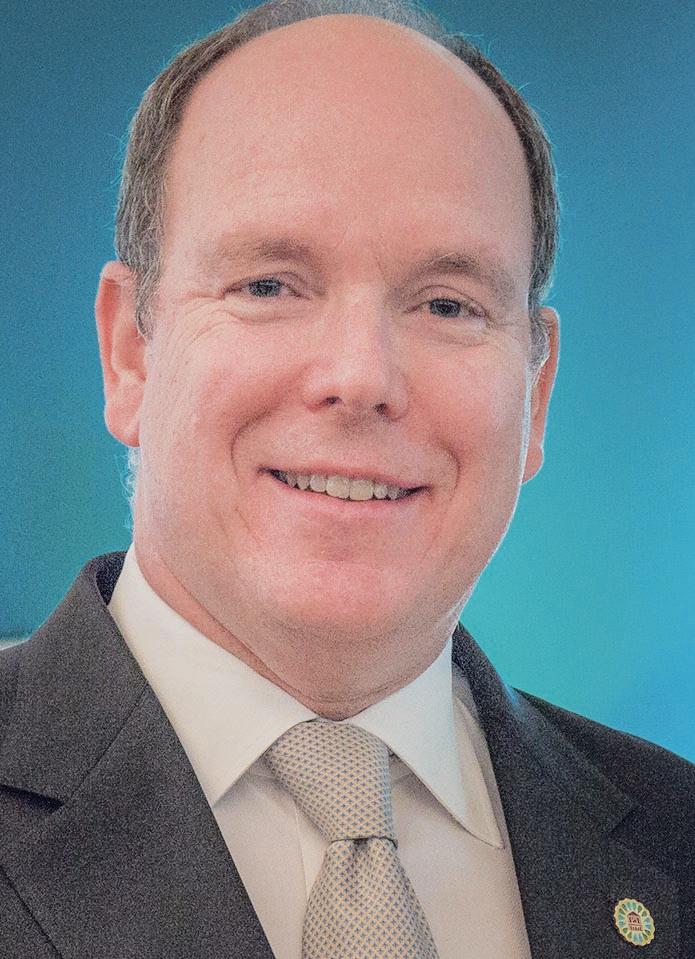
provided to the prince and me at our safehouse.
On June 1, 2006, I flew to Washington because the CIA told me “Important things” were happening. One such important thing: President George W. Bush had just fired Porter Goss as CIA director, and my friends, the Gosslings, were out of power with him.
That evening, I dined at Morton’s Steakhouse in Bethesda with Clair George, who I enthralled with tales about rampant corruption in Monaco.


“You’re messing with their rice bowls,” he finally said. And in a scene borrowed from “The Godfather,” Clair foretold the end of my mission in the prince’s service. “This is how it will happen: A group will go to Albert and demand, ‘Get rid of Robert.’”
When I met with the CIA team, they reaffirmed several points, ticking off each, as if all that mattered was that we acknowledge the basis of our relationship.
In December, the wise words of Clair George came into play when minions of Prince Albert, without his authorization, attempted to terminate my role as spymaster. I could not get a hold of Albert and therefore could not be sure he would be present for meetings we’d scheduled several days hence in Monaco with LIPS and another intelligence service.


I spent the next few days shredding documents originating
from our liaison partners, not sure what would happen next. I spoke with LIPS on the hotline and assured him we would safeguard the agency’s cryptographic equipment until it could be collected.
With still no word from Albert to clarify the situation, I booked a flight to London. At 9:30 a.m. in Nice Airport, waiting to board EasyJet, my cell phone chimed.
“Aren’t we supposed to be meeting today?” asked Prince Albert.
I could scarcely believe my ears.


“Albert,” I said, “I’ve been told by the Palace accountant we’re out of business, that we must shut down.”

“Oh, no — he wasn’t supposed to tell you that. I needed to talk to you.”
About money, he added, and a complaint from the police chief that I was working his turf.
“I’m sorry,” I said, “I had to cancel your meetings today because after hearing your accountant’s news I could not be certain you would appear, and I could not risk embarrassing you and inconveniencing our visitors. Are you not receiving my messages?”
Albert said he had not received my phone or fax messages. (Intercepted? And if so, by whom? More likely, Albert could not be bothered to check his messages.) This was, apparently, the first he knew of any possible problem.
“So your accountant acted


 By KATHERINE ZEHNDER NEWS-PRESS STAFF WRITER
By KATHERINE ZEHNDER NEWS-PRESS STAFF WRITER







The fifth annual Housing Santa Barbara Day took place on Saturday from 10 a.m. to 2 p.m. at De la Guerra Plaze. The event, hosted by 2nd Story Associates, is intended to connect community members with local affordable housing non-profit agencies and service providers.



“It was wonderful and very well attended and there was line after line of people at all of the booths including the housing authority tables for information. There were people from all walks of life: homeless, single parents, young workforce couples, seniors on fixed income, it ran the gamut and went to show the overwhelming need for affordable housing in the community,” Rob Fredericks, CEO of Housing Authority of the City of Santa Barbara, told the News-Press. “It was really great that we had the event and that so many of our partners were there to provide information including legal aid and workshops. It was very well attended. I’m so happy we had such a good turnout today.”
Well over 400 people attended the event, Mr. Fredericks told the News-Press.
“It was a very nice environment. It seemed like everyone was enjoying the event from those who were manning the different tables and partners, to those coming and searching for help. Everyone there seemed to be focused on helping one another and providing what could be provided. Unfortunately
so many people are looking for affordable housing and we aren’t able to provide it. There is such an overwhelming need, if we are going to come anywhere near achieving the housing need we are going to need local leaders to step up and locate local sources to coincide with state and federal funds,” said Mr. Fredericks.
“We held the event in 2021, but it wasn’t well attended, and I think that is part of the COVID issue with people still social distancing. This was the first full year of so many people coming out that I have seen since 2019 looking for housing and supportive services resources,” he continued.
The Rob Moreno Quartet and Jineanne Coderre Duo played during the event. “They were terrific. They added an ambience to an entire event making … and made people feel invited to stay awhile and we had food trucks available so people would take the time to go to each individual table and learn what was available to them in the community,” said Mr. Fredericks.
October is National Housing America Month, a time when communities throughout the country celebrate local housing efforts and a time to raise awareness for the need for additional affordable housing through education, advocacy and empowerment.
“There are events all over the country to highlight affordable housing opportunities and the need for affordable housing in communities. The main purpose

Various agencies were available to answer questions and assist people seeking housing.
of this event is to shine a light on the need for affordable housing in the community and provide local residents with information on how to apply for affordable housing. Its purpose is to disseminate information to the residents as well as highlight the need for affordable housing,” said Mr. Fredericks.
To learn more about Housing Santa Barbara Day,go to http:// www.2nd-story.org.





“Even though people are in dire need of affordable housing both the city and the county are doing everything in their power they currently can with the current resources available. But much much more is needed in terms of local resources to match state and federal resources to build the housing need,” said Mr. Fredericks. “We are doing what we can, but we could do so much more with available local funding sources.”
email: kzehnder@newspress.com
Adam Jose Baiza Flores was born on November 22, 1932, in Carpinteria. He passed away peacefully at Sarah House on September 27, 2022.
He attended Carpinteria High School, a proud Warrior football fan and managed equipment for the team. In 19521954 he served in the US Army during the Korean War con ict where he was a coo . He wor ed in construction as a drywall taper for over 50 years.

Adam enjoyed watching LA Dodgers and Raiders games. He li ed to play Chec ers, Dominoes, and was a great bowler. At Christmastime he would oversee the family tamale assembly. He was a great coo and enjoyed ma ing salsa for family and friends.
He will be greatly missed by his wife Jacelyn Flores, sister Eva Ortiz, daughters Luci Rojas (Richard), Josie Castagnola (Matt), Carlotta Davis (Greg), plus 7 grandchildren, 8 great-grandchildren and many nephews and nieces.
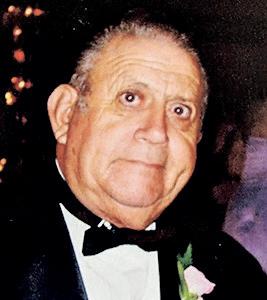
He is preceded in death by his parents Martin and Lucia Baiza Flores, brothers Robert Flores, Ralph Flores, Jess Flores and grandson Bennie Sanchez.
he family wishes to than Sarah House and Santa Barbara Hospice for their compassionate care. A viewing will ta e place on October 10th, 2022, at 9 30 am funeral mass at 10 00 am at St. Joseph Church, Carpinteria, CA. Interment will be at Carpinteria Cemetery.
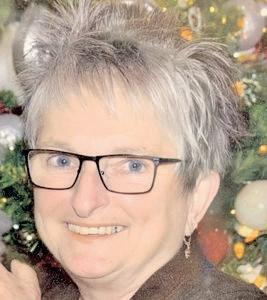
1938 – 2022
Helene passed away on September 24, 2022 in Santa Barbara. She was born March 27, 1938 in Sherbrooke, Quebec to Luna (Dole) and Oscar Daigneault. She grew up there and later in Greenlay, along the St. Francis with many siblings, Saturday evening radio broadcasts of “Hockey Night in Canada,” a slew of local kids, visiting cousins, and lots of horseplay--with attendant stories that were told, re-told, and revised over time. After high school, at the ripe old age of 17, Helene moved to Joliette, Quebec, where she was the sole teacher for a multi-grade, oneroom schoolhouse. She then returned to nursing school in Sherbrooke. Upon graduation, she was recruited and moved to Santa Barbara to take up a nursing position at Cottage Hospital. During her early years in Santa Barbara, she lived with a group of other nurses in a large house on the Upper East Side, within walking distance to the hospital. She loved nursing and the community of friends. In 1962, Helene married Charles Willey, a young lawyer, and they soon began a family. Helene delighted in the role of mother. She was an active, supportive, and engaged parent, helping run a neighborhood preschool, acting as room mother for numerous classes, doing multiple stints as Cub Scout den mother, serving as PTA President (SBHS), and attending and promoting her children’s many sports activities, all the while presiding over a menagerie of pets: a succession of dogs, the odd cat, a pygmy goat, a duck with and a chatty African Grey parrot. Helene was an excellent cook and also loved to bake-her coffee cake, cinnamon rolls, and apricot horns were family favorites. She believed maple syrup was its own food group and she was an early adopter of nutrition-focused eating. Helene was engaged in the larger community, serving two terms on the Santa Barbara County Grand Jury and volunteering as a Courthouse docent. She was also a devoted member of the Junior League and took pride and pleasure in helping produce the annual rummage sale for several years, as well as guiding the Santa Barbara Junior League cookbook to print. Helene loved to travel (throughout the U.S. and Canada, Ireland, Scotland, England, France, and Switzerland) and was occasionally adventurous (Nepal to visit one son, New York City to visit another). She enjoyed her book club and when hosting, she always served meals that were thematically linked to the particular book. Helene was loyal, opinionated, a fan of teasing and being teased, and she liked to laugh. Family was everything to her and she was a fantastic mother and a devoted grandmother. She will be missed. Helene is predeceased by her parents and four siblings (Dwight, Malcolm, Joanne, and Dianne). She is survived by siblings Marilynn, Stephen and David; her children Stephen (Gretchen), Heather (William), Brent, and Scott (Laurel); and grandchildren Ryan, Cole, Blake, Lucien, Sian, Caden, Katrine, and Theo. Services will be private. If inclined, please consider a donation to VNA Health - https://vna.health/.
It is with deep and heavy sadness that we announce the death of Alma Anna Tabacchi Russo. Alma passed away on October 1, 2022, in Visalia, CA after a one-year battle with liver cancer.
Alma was born on December 20, 1950, at Saint Francis Hospital to Emilio and Jennie Zanella Tabacchi. She attended kindergarten at Lincoln School on the corner of Cota and Santa Barbara Streets, which is now a parking lot. She attended Dolores School and then went to Santa Barbara High School, graduating in 1968.
After attending Santa Barbara City College, she worked for Dr. Ronald Robertson, whose dental of ce on Islay Street backed up to Renga Brothers on State Street. It was there that Alma met the love of her life, Mike Russo. They were married on December 5, 1970 and celebrated 51 happy anniversaries together.

In 1982, Alma and Mike purchased property in Woodlake, CA, where they had a home built and planted grapes. Both Alma and Mike worked for the United States Post Of ce, with Alma retiring in 2010. She and Mike en oyed taking cruises, including the Panama Canal, Me ico and the California Coast. Alma also en oyed shing, camping and cooking. She loved to try any craft that caught her eye.
Alma was preceded in death by her parents Emilio and Jennie Tabacchi, and her brother Jim Tabacchi.

Alma is survived by her husband Mike, nephew Fred (Cindy) Tabacchi, niece Julie (Joseph) Grimes, grandniece Laura Tabacchi, and many cousins here in Santa Barbara and Italy.
A Rosary will be held on Monday, October 10, 2022, at 7:00 pm at Our Lady of Sorrows Catholic Church. Graveside services will be held on Tuesday, October 11, 2022, at 10:00 am at Calvary Cemetery.
The family would like to thank Kaweah Health Hospice and the amazing staff at Transitions Care Services for the love and care they provided to Alma.
In lieu of owers, the family re uests that donations be made to Kaweah Health Hospice or your favorite charity.
Arrangements entrusted to Welch-Ryce-Haider Funeral Chapels (805) 965-5145.
Mr. Jerry Fronterhouse, beloved husband, brother, father of two, grandfather of nine, great-grandfather to four, business leader, and friend to many, passed away peacefully on September 17, 2022, in Dallas, Texas, at the age of 86. He was born in Ada, Oklahoma, on May 22, 1936, went to high school in Oklahoma City, and graduated from the University of Oklahoma with a degree in petroleum engineering.
Upon graduation, he married his college sweetheart, Gretchen, and reported for duty with the United States Navy at Oxnard. After Jerry’s initial time at Oxnard, he was stationed at Key West for two years where his skills were utilized in overseeing the supply chain and logistics of the Naval operations in the region.
Upon successfully completing his duty with the Navy, he attended Harvard Business School and graduated with an MBA in 1962. He and Gretchen moved to Dallas, and he began his career at Republic National Bank, starting as a credit analyst. He advanced through the organization, and eventually became chairman and CEO of RepublicBank Corporation (holding company of Republic National Bank), and its successor First RepublicBank Corp, at its peak the 12th largest bank holding company in the U.S. He also served on the board of directors of numerous public and private companies as well
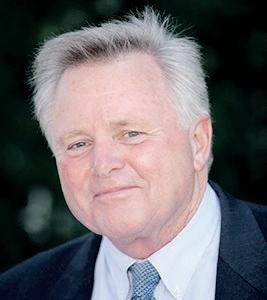
In 2012, Gretchen went home to be with the Lord. Jerry provided great care for her while she was battling pancreatic cancer. He met the second love of his life, Annette Simmons in 2014, the result of some thoughtful matchmaking by a few good friends. They quickly bonded, fell in love, and were married in 2016. He and Annette instantly shared a love of travel, dinners and events with friends, Dallas Cowboy games, and time in California smartly split between Carmel and Montecito. Jerry grew to love Annette’s daughter Amy and her husband Joe. Annette never left Jerry’s side during his short battle with cancer.
His life was marked by action, engagement, service, hard work, great friendships, love for family. He was always characterized by optimism, a broad smile and a hearty laugh, and always leaned into what was next.
Jerry’s death was preceded by the deaths of his wife of 53 years, Gretchen Gover Fronterhouse, his parents, Victor and Austa Fronterhouse, and his older brother, Bill Fronterhouse.
He is survived by his wife, Annette Caldwell Simmons; and her children, Amy Simmons Crafton and her husband Joe Crafton, Andy Fleck, his wife; and two grandchildren; his brother, Don Fronterhouse; his daughter, Jenny Fronterhouse Larsen and her husband David; his son, Jeff Fronterhouse and his wife Elizabeth; his grandchildren, Brant, Lindsey (and her husband Will Wade), Lauren, Blake, and Laney (and her husband Nicholas Kinnear), Carson (and his wife Katie), Hayden, Alex (and his wife Sarah Kate), and Kara, and four great-grandchildren.
HODGES, Tom R.
Tom R. Hodges passed away September 29, 2022.




Born to Harold and Gertrude Hodges on December 1st, 1925 in Milwaukee, Wisc. He was inducted into the NROTC Program at Marquette University in 1943. Graduating in until his discharge in 1947.
Tom entered the Medical School of Marquette University in 1948, graduating with an M. D. Degree in 1952.
In 1946 Tom married Hildegarde Dietzgen and their children were Barbara Hodges (Richard Lord), Eric Hodges (Tandi), Cathy Geletko Hodges (Steve) and Russell Hodges (Beth).
physician in Malibu, California in 1953 after his internship at Santa Monica Hospital and retired from practice forty years later in 1993. passing in 2013.
Tom was always an avid golfer and throughout his life never lost his interest in golf.

Tom built the Hodges Castle in Malibu which was his home for many years. He has also built 4 other homes.
assisted in the comfort of cats, dogs, wild animals and birds.
In remembrance of Tom R. Hodges, M.D., please donate to your favorite Charity.
Lovingly remembered for her caring nature, natural elegance and sharp mind, Inge M. Uphoff passed away in Santa Barbara on September 17th at the age of 92. Born in ermany, she grew up in isenach, and after II, ed west with her mother to Darmstadt, reuniting with her father there. Inge attended high school, learned to sew her own wardrobe and set her sights on nglish pro ciency so she could realize her dream to go to America. She worked for a year in London as an au pair and later secured a job as a secretary at the American Airbase in Wiesbaden. Through friends there, she eventually gained passage on the SS Statendam to New York in 1957. With energy and ingenuity, she carved a life out for herself, rst living at the NYC YWCA while working on Park Avenue. She then traveled west by Greyhound to Manhattan beach, CA. A working woman, she met Robert Uphoff, her future husband, at a party. They married in 1959, had two daughters in the Bay Area, moved to Florida brie y, then to Pennsylvania before moving to Santa Barbara their nal home in 197 She hosted foreign students and travelers, and explored the world, forging a bond with Bob that allowed them to handle big challenges. Inge’s design talents played a central role in the rebuilding of their house after the Painted Cave re, creating an elegant and inviting home for family and friends of all ages to visit and feel nurtured. Inge was an avid reader, seamstress, knitter, hiker and gardener. She was a docent and supporter at the SB Museum of Art and sang with SB Choral Society. She is survived by two daughters, a son in law, granddaughter, and her exchange daughters grandchildren, and is deeply missed by family and friends around the world.
Neil Elliott passed away at the age of 80 on Sunday, August 7th, at Cottage Hospital with his daughter by his side.
Neil was born March 7, 1942, in Aberdeen, Washington, to Harry C. Elliott II and Margaret (Julius) Elliott. He was the oldest of four children and traveled the United States with his family as a small child before they settled in California. He grew up loving cars and music, and he attended many schools across Southern California, ultimately graduating from Chaffey High School in 1959. He later received a degree in Pharmacy from Idaho State University and worked at Santa Barbara Cottage Hospital as a pharmacist.
Throughout his life, Neil continued to pursue the love of travel fostered by his parents, traveling around the world solo at the age of 24 and later visiting Mexico, Canada, Europe, Asia, Africa, Australia, and New Zealand with his wife and daughter. He also enjoyed many vacations in Hawaii with his family, including his parents, siblings, wife, and daughter and her family.
He had a great passion for the arts, expressed in the form of collecting art books and a love of Opera. He held season tickets to many California Opera venues and chased Wagner’s Ring Cycle around the world, ultimately viewing it 37 times in its entirety.
However, none of Neil’s other passions could hold a candle to the love he had for his family both near and far. He always enjoyed spending time with them, and in his later years, his granddaughters were the light of his life. Neil didn’t always say much, but when he did, he shared his wisdom and demonstrated a great sense of humor.
Neil is survived by his wife of 52 years, Barbara (Arthur) Elliott, daughter Marissa Elliott (Geoff Hendershot), and three granddaughters who thought the world of him. He is also survived by his sisters, Linda Elliott-Langen (John) and Norma Byrne (Gary); brother Harry C. Elliott III (Debbie); sister-in-law Patricia Rogers (Patrick); and many nieces, nephews, cousins, and other family members.
His family wishes to thank Dr. Ahmed, Dr. Delio, Dr. Nagy, and Dr. Uyesaka for their help in making the last few years of Neil’s life as good as they could be, as well as the care team at Santa Barbara Cottage Hospital and caregivers from Right At Home for
SARAGOSA, Augustine Joseph Born August 22, 1930, died September 14, 2022 Augustine Joseph “Joe” Saragosa passed away on September 14 at the age of 92. A kind man who was unwavering in his faith, he loved spending time with his family. Joe was born in Carpinteria in 1930 to Julio and Teodora Saragosa. He was the ninth of ten children in his family. He graduated from Santa Barbara Catholic High School in 1949. He was inducted into the United States front line in Korea.
Joe is survived by his wife of 67 years, Caroline Saragosa, great-grandchildren, and 3 great-great-grandchildren. packaging tortillas at his in-laws’ factory. He and his wife later opened a restaurant, Joe is predeceased by his parents and 8 siblings. He is survived by his younger sister enjoying music together. Rita recalls that visitors would come to the house and say they don’t have company -- we all live here!’ ” with his cousins. He was almost always behind the camera at family gatherings and on trips. He also loved music and had a large mariachi music collection. An avid gardener, barbecue, often with a glass of wine on ice.
Joseph School adjacent to the church immediately following the mass.
Obituary notices are published daily in the Santa Barbara News-Press and also appear on our website www.newspress.com







To place an obituary, please email the text and photo(s) to obits@newspress.com or fax text only (no photos) to (805) 966-1421. Please include your name, address, contact phone number and the date(s) you would like the obituary to be published. Photos should be in jpeg format with at least 200 dpi. If a digital photo is not available, a picture may be brought into our office for scanning. We will lay out the obituary using our standard format. A formatted proof of the obituary and the cost will be emailed back for review and approval. The minimum obituary cost to print one time is $150.00 for up to 1.5” in length -- includes 1 photo and up to 12 lines of text, approximately 630 characters; up to approximately 930 characters without a photo. Add $60.00 for each additional inch or partial inch after the first 1.5”; up to approximately 700 characters per additional inch.
All Obituaries must be reviewed, approved, and prepaid by deadline. We accept all major credit cards by phone; check or cash payments may be brought into our office located at 715 Anacapa Street.
The deadline for Saturday, Sunday, and Monday’s editions is at 10a.m. on Thursdays; Tuesday’s edition deadlines at 10a.m. on Fridays; Wednesday’s edition deadlines at 10a.m. on Mondays; Thursday’s edition deadlines at 10a.m. on Tuesdays; Friday’s edition deadlines at 10a.m. on Wednesdays (Pacific Time).
Free Death Notices must be directly emailed by the mortuary to our
at news@newspress.com. The News-Press cannot accept Death Notices from individuals.
(The Center Square) – Gov. Gavin Newsom will square off in a debate against his challenger for governor, state Sen. Brian Dahle – a contender for the state’s top seat that polling numbers indicate remains unknown to most voters.
The debate, hosted by KQED on Sunday, October 23, will be the first time Gov. Newsom and Sen. Dahle, a Republican state senator from Bieber, sit down to field questions from moderators.
As of now, it is the only confirmed meeting of the two candidates for governor, as noted by KQED.
Polling released this week from the UC Berkeley Institute of Governmental Studies indicates that Gov. Newsom holds a sizable lead over Sen. Dahle, with 53% of likely voters supporting Gov. Newsom and 32% supporting Sen. Dahle. The poll also suggests that Sen. Dahle’s campaign faces a unique challenge – 52% of likely voters are unfamiliar with Sen. Dahle and cannot offer an opinion “when asked their overall impressions of him.”
Throughout his campaign, Sen.
Dahle has regularly criticized Gov. Newsom for the state’s high gas prices and homelessness rates. If he is elected, Sen. Dahle’s plan says he wants to declare homelessness a “public health crisis,” address crime by appointing a parole board that will “not allow for the early release of violent and repeat offenders,” and suspend the state’s gas tax to address the high cost of living.
Thus far, Gov. Newsom’s reelection campaign has taken an untraditional route as he maintains a comfortable lead for reelection. Many of his recent campaign efforts have been used to target Republican-led states who are rolling back abortion rights, showcased in his recent move to purchase billboards in red states promoting California’s new abortion services website.
The debate will begin at 1 p.m. on Sunday, Oct. 23 on KQED Public Radio 88.5, with a recorded television broadcast of the debate to air at 6 p.m. on KQED 9. Coincidentally, the San Francisco 49ers host the Kansas City Chiefs at 1:25 p.m. that same afternoon.






Today Mon.
City Hi/Lo/W Hi/Lo/W
Cuyama 89/56/s 85/53/s
Goleta 70/56/pc 70/56/pc
Lompoc 66/53/pc 67/53/pc
Pismo Beach 67/53/pc 68/51/pc
Santa Maria 69/54/pc 71/52/pc
Santa Ynez 80/53/pc 81/52/pc Vandenberg 62/54/c 63/55/c Ventura 70/59/pc 68/59/pc

Ojai 86/56/s 83/58/s
Oxnard 71/59/pc
Palm Springs 96/74/s
Pasadena 85/63/pc 83/62/s
Paso Robles 89/51/s
Sacramento 90/56/pc
San Diego 76/66/pc
San Francisco 68/54/pc
San Jose 78/55/pc
San Luis Obispo 75/54/pc 75/53/pc
Santa Monica 73/63/pc 74/62/pc
Tahoe Valley 73/37/s 71/39/pc






without your authority?” I asked.
“He doesn’t know how complicated this is,” said the prince. “I’m going to bawl him out.

“Are you just arriving?” Albert asked me.







“No, I’m leaving.”
“When can we meet?” he asked.

There was no point, we agreed, in my retrieving checked baggage and returning to Monaco. We’d meet after the holidays, in early January.

I arrived back in London bullish and buoyant, if emotionally drained. One thing about a crisis, you’re able to identify your true friends. That evening I met the former MI6 Washington station chief in the Cigar Bar at the old Churchill Hotel on Portman Square and recounted the events of the past four days.
When I finished, he shook his head and said, “You cannot raise the flag, say you want to crack down on organized crime, then lower it. It sends all the wrong messages and isolates Monaco much worse than before. But they won’t go away,” he added. “They’ll come back harder next time.”
One month later I was escorted to a breakfast nook in the kitchen of Prince Albert’s private quarters inside Palais de Monaco.
When Albert entered and took his seat opposite me, I asked, “So who’s trying to do me in now?” “What do you mean?” he replied, taken aback. “No one.”
No one turned out to be Monaco Police Chief Andre Muhlberger. He probably never liked the idea of a non-official outsider — especially an American — instructing several of his officers what to do, but with others now trying to terminate my service, Mr. Muhlberger judged his timing right to put his own boot in.
He had whined to Albert, accusing me of stealing the police department’s reporting on Islamic fanatics in the area and repackaging it as a product of our service.

“As I’ve already told you,” I said, sipping coffee, “your police intelligence unit produced several reports over a 10-year period that no one at the Palace bothered to read, assuming the reports even reached the Palace.

And as I also told you, since the police department and Interior Ministry had not conducted an assessment of such reporting, even after 9/11 and bombings in London and Madrid, and since we had received intelligence from a liaison partner suggesting Monaco could be targeted by independent Islamic cells, we took it upon ourselves to translate the reports into English, analyze them, mesh the reporting with other intelligence we’ve received from several liaison partners and write it into an easy-to-comprehend, upto-date report that fully credits the police department’s input.”
Albert said, “Oh.”
“Have you read it?” I asked.
“Not yet.”
I then returned to my safehouse for a meeting with … Chief Muhlberger, who knew I’d just met with the prince. The police chief obviously hoped that I’d had been seriously reprimanded, if not curtailed or outright terminated. Thus, when I appeared relaxed and confident, he seemed devastated.
We sat down. I told him I’d enjoyed an excellent dialogue with Albert and that I understood he, Chief Muhlberger, had some concerns.

I told him I would be delighted to deal with his concerns directly.
He shrugged as if he had no concerns and said nothing more.
I escorted Mr. Muhlberger to the foyer and saw him into the elevator. “Thank you for your support and friendship,” I said, looking him straight in the eye.
The police chief looked away, then down. He knew I knew.
Surrounded by vipers, it was a good thing I knew a thing or two about snake charming by now. Because the next face I saw in our safehouse belonged to LIPS from the CIA. We were still in crisis mode, fighting for our survival, and he wanted to recite his playbook, the basis of our relationship, or “The S’s,” as he called them: Support, security, structure, and separation — though “the S’s” could have stood for s**t-squared.
My situation wasn’t Intelligence 101. It was the real thing, as in hardball.



LIPS told me that CIA’s new director, Michael Hayden, had finally been briefed on
the CIA’s relationship with us, fully supported it and sent his greetings. Really? I felt like saying. To hell with greetings — and lip service — how about a bazooka?


At some point I recruited Prince Albert’s cousin, Jean Leonard de Massy (known as J.L.), to work with our service. I viewed him as my natural successor to run the Monaco Intelligence Service (if it survived) on the basis that, in so cutthroat a place as Monaco with its many warring factions, Albert’s intelligence secrets should be kept within his family. I flew with J.L. to Washington so I could introduce him to the CIA.
Next evening, I introduced J.L. to a CIA team — all new faces — who hosted us at Café Milano in Georgetown.
Bottom line: The CIA met J.L. and offered to train him.

As we walked away from the CIA’s contingent at the intersection of Wisconsin Avenue and M Street, J.L. turned to me and, seemingly bewildered by what had just taken place, asked a very pertinent question: “Do you think they can really teach me anything?”
As for training dates: LIPS in Paris had told us he was waiting for headquarters to decide. Headquarters now told us they were waiting for LIPS to decide. Some things never changed.
On June 16 , the fifth anniversary of my hiring by Prince Albert to be his spymaster, I had the pleasure of LIPS’s company for lunch in the open air at Quai des Artistes on Monaco’s port. He told me his ambassador had expressed concern about the prince’s plan to vacation come summer with President Vladimir Putin of Russia. “He’s concerned that it could open Pandora’s box.”
“It’s already open,” I said. “You haven’t been paying attention.”


LIPS gulped — an “ohmigod” moment. This was not how he wanted his tenure as the CIA Paris station chief, with responsibility for Monaco — and a secret relationship with the prince — to end. “Doesn’t he want to keep doing what he asked you to do?”
“He thinks he should,” I replied. “Thinks he should?”
“Exactly.” “That’s an important distinction.”
“I’m glad you caught it.”
“What are you going to do about it?” he asked.
“Under the circumstances,” I said, “I’d like to see somebody senior at your headquarters to redefine our relationship — next month, if possible.”

“That’s very doable,” said LIPS, for whom everything was very doable — until you needed to actually do it. “We have a new European division chief taking over shortly.” (The fourth in as many years.)
LIPS told me he was headed to “the seventh floor” for an executive job in senior management. If true, heaven help the CIA — and our country.
Before departing from what would be our final meeting, LIPS ran through, as always, his motivational list of concepts to keep our relationship structured. “Does that make sense?” he concluded with his catchphrase. No, our relationship with you folks has been rather senseless, but thanks for lunch.
Two weeks later, as I prepared to visit Washington, I checked in with CIA Paris on the doable-ness of meeting senior management.
“Bad news,” said LIPS’s assistant. “Nobody is around.” “Nobody?”

“The new European division chief isn’t in place yet, same with the new deputy chief. They’re playing musical chairs.”
It hit me almost immediately that LIPS did not want me to meet anyone senior from headquarters, lest I say something about what was truly going on in Monaco that might hurt his seventh-floor job prospects.
I flew to Washington anyway. My first meeting was with Clair George, who was aghast when I told him no one at the CIA was around to see me.
“In my day,” he growled, “you’d be seen, even if we had to hire an actor to sit with you.”


“It’s one of two things,” I said. “CIA is as messed up as everyone says — or LIPS did not convey my request, then lied to me when I pushed the issue.”
Next evening, over pre-dinner cocktails, I bounced the same story off my retired MI6 friend.
“That’s ridiculous,” he said. “You’re the chief of a service. They should accommodate you. There




are people in jobs, and they’re in town this week. I’m having dinner with them tonight. Shall I let them know you’re here?”
I told him to feel free. We’d flush out the truth.
“I’ll tell them,” he said, “that Monaco’s intelligence chief is in town feeling very neglected.”
He phoned me later that evening with news: There had been no request from LIPS or his staff in Paris to meet with me. Nor had LIPS mentioned to anyone that I would be in Washington.
Clair George was flabbergasted when I told him. “In my day, that was a fire-able offense!” he thundered. “I’d fire his ass!”
The deputy European division chief was in place — and in town — and intended to phone LIPS the next day to ask why my request for a meeting had not been relayed.
Later, I discovered not only had LIPS not conveyed my request to meet with senior management but, in his final debrief upon returning to Washington, had not conveyed intelligence about the Russian surge into Monaco — in fear, perhaps, that it would tarnish his reputation. This also explained, as I had thought, why he’d obstructed my request for a meeting with senior management. He assumed (correctly) I would provide crucial intelligence that he had withheld.
In early September 2007, I went to see U.S. Sen. Saxby Chambliss, a ranking member of the Senate Select Committee on Intelligence, at his office in the Russell Senate Building.
“How are things?” he asked.
“Not so well, Senator,” I replied. “I’m planning to dissolve our intelligence service.”
“Can’t you leave it in the hands of someone else?” he asked.
“I tried, Senator. I wanted his blood relative to succeed me. But the prince was talked out of it. The bad guys do not want the prince to have an intelligence service, for obvious reasons.”
I pointed out that the CIA had behaved ineptly and had been of little help as a liaison partner.
“What do you want me to do?” he asked.
“Senator, I haven’t come here to ask you to do anything. I’m here as a courtesy to update you on the situation because you were kind enough to support us with congressional oversight.”
The next day, I lunched with Tom T., one of the new faces from the CIA headquarters, at Paolo’s in Georgetown. (He was actually an old face who had returned from retirement because so many officers from the operations directorate had bailed.)
Tom was shocked to hear of the Russian surge into Monaco. He was also astonished that LIPS had reported no such thing at his final debrief weeks earlier. “It’s all news to me,” he said, shaking his head in disbelief. “I thought we were zipping right along.”
I told Tom I would dissolve the Monaco Intelligence Service in the autumn and that the CIA’s relationship with the prince would, effectively, cease to exist.
Tom wanted to put it back on track, operate against the Russians and recruit the prince’s key Russian contacts for Albert’s own good.
I admired his gumption. But I’d seen this gung-ho song-anddance before, and I was wary of any further dealings with the agency. Moreover, it had become clear that Albert had lost interest in cracking down on corruption and money laundering — and was welcoming Russian oligarchs with open arms.
Tom phoned me a month later, having confirmed as true everything I’d told him. “We cannot just walk away from this,” said Tom. “We have a mandate to protect the prince and this relationship.” The new Paris station chief was visiting D.C., he said, and wanted me to fly over from California nine days later to meet her for lunch.
I said I’d consider it. The next day, I phoned him back. “I’ve been signaled by a friendly European service that your new station chief intends to revert to dealing with Monaco the old way, through the French. I don’t need to spend my time and money getting my brain picked.”
Said Tom, “We wouldn’t call you all the way here to be fired.”
“You can’t fire me,” I chuckled. “I don’t work for you.”
I’d planned an October sweep through London, Paris, Monaco, and Luxembourg, where I wanted to meet with European liaison partners and gently close the doors they had so kindly opened.
However, my friends in Luxembourg became nervous


after French President Nicolas Sarkozy’s new DST (internal security) chief, Bernard Squarcini, announced to them that “Eringer is the CIA’s station chief in Monaco.” Surprise, surprise. This was how the French finally chose to discredit me. Not very original but calculated to ensure our liaison partners would become dubious of further contact with me.
Consequently, I gave Europe a miss and instead conducted a review of all that had transpired since the first day I began my mission in the prince’s service.

It was clear, upon review, that Prince Albert had squandered a great resource. He could have been briefed on any topic of his choice by one or more of 20 intelligence services with which I had created liaison relationships.
But he chose listening to his corrupt cronies instead.
I harbor no regrets. Despite the prince not appreciating all that had been accomplished for him, it was, for me, an excellent learning experience during which I made many new friends and acquired a vast amount of knowledge.
And I had remained true to my ideals. Many bribes were offered — from large amounts of cash for introductions to the prince to secret stakes in business enterprises. I declined every one of them.
I earned little money in service to the prince because we invested most of our budget into building a quite stellar service, to provide the prince with the finest intelligence he would need for introducing a new ethic to his principality. We believed he meant what he said about putting — what he called at his investiture — “morality, honesty and ethics at the forefront of my government and cabinet.”
Sadly, it was a sham.
We ensured that the prince was very well informed about the shady characters whose presence he continues to tolerate even while announcing to the world he is sorry Somerset Maugham ever penned his haunting words about Monaco being “a sunny place for shady people.”
The bad guys won.
And, sorry to say, by proxy and default, Albert had become a bad guy himself.
Robert Eringer is a longtime Montecito author with vast experience in investigative journalism. He welcomes questions or comments at reringer@gmail.com.




The UCSB women’s volleyball team (8-7, 4-1) had its six-match win streak snapped down at the Walter Pyramid tonight as it fell in four sets to Long Beach State (7-6, 2-3) 20-25, 25-20, 25-22, 25-22.
For the second-straight match Briana McKnight set a new career-high, putting down 14 kills and swinging a .323 clip with eight digs.
Tallulah Froley joined her in double digits for the ninth time this season with 11. She has now gone for 10+ in six of her last seven contests.
Deni Wilson added eight on a potent 8-1-15 line for a .467 average and added two blocks with one solo.
Michelle Ohwobete nearly missed a double-double again with nine kills and 11 digs.
Macall Peed, dubbed the conference’s best libero by The Beach’s announcer, led all players with 17 digs and converted on all 26 serve receptions sent her way.
UCSB roofed Long Beach State 10 times and has now sent down double-digit blocks eight times this season and four times in its last five matches.
Mehana Ma’a had a double-double with 25 assists and 10 digs.
Nia Correal led the team with five total blocks,
with one solo.
The first set was all Gauchos, who never trailed and outhit Long Beach State .333-.139 while converting on 85% of their sideout chances. Froley had six kills in the set as UCSB handedly won the set and led by as many as six.
The second frame was a back-and-forth affair with 12 ties and four lead changes. The two teams met at 17-17 and from there The Beach closed it out on a 8-3 run to tie the overall match.
The Long Beach State defense came alive in the third, holding the Gauchos to a match-low .083 hitting percentage and just 10 kills and six errors. UCSB led early, but quickly found itself behind before tying the frame at 20 apiece. Three-straight attack errors would put the visitors behind and give the home team the set and the lead.
The fourth and final set saw 10 ties and two lead changes, but a hot Long Beach State offense managed to post a .400 hitting percentage. Once again, the teams met at 20-20, but The Beach found five kills on the next six plays to tarnish UCSB’s undefeated conference record. The Gauchos have yet to top The Beach in that building since 2011.



After being swept in Surprise on September 17, Westmont Volleyball (13-6, 7-2 GSAC) avenged themselves in Santa Barbara on Friday night against OUAZ (10-9, 5-5 GSAC). The visiting Spirit took the first set soundly, before the Warriors found their footing and threeconsecutive wins to take the match.
“We got the monkey off our back tonight, for sure,” said Westmont head coach Ruth McGolpin. “Our serving was not good, but our passing picked up, and our blocking picked up when we needed it to. We started to rip balls as the night went on too, and it was enough to get the job done in the end.”
In the first set, OUAZ opened the night on an 8-3 run, setting the tone for the first game’s result. Minutes later, Westmont trimmed the deficit to 10-8, which was as close as the team would get from there on out. Trailing 139, Westmont allowed OUAZ to go on a 5-0 run to lead 18-9, all but ending the set.
Eventually, Westmont’s eighth attacking error of the set gave the Spirit a dominant 25-14 lead to open the night.
In the second set, Westmont arrived once the game entered double-digits. Up 10-9, a kill from
Sara Krueger sparked a four-point run that included back-to-back service aces from Keelyn Kistner, putting Westmont up 14-9. The Spirit clawed back and got within a pair at 18-16, but Westmont answered with another four-point swing, this time capped off by a kill from Taylor Distelberg.
A service error from OUAZ ended the set 25-18 in favor of Westmont, tying the match at one.
In set three, Westmont flipped momentum for good, scoring the first three points of the game, and never letting the Spirit get back within one. With Westmont leading 8-6, the Warriors scored on four consecutive opportunities which included a kill from Lexi Malone and another pair of aces from Kistner.
The Spirit stopped the run for a moment, thanks to an attacking error from Phoebe Minch, but the halt was short-lived for OUAZ.
A kill from Ashely Boswell put Westmont up 13-7, and sent Minch to the service line. Then, Minch served for six consecutive possessions while Westmont built their lead to 18-7.
Up 20-10, Westmont closed out the set on a 5-1 run to win it 25-11.
The fourth set proved to be the match’s closest contest. As the set grew later, Westmont led 23-20, and 24-22, but the Spirit would not go down gently, forcing the set beyond the usual 25-point conclusion. Up 25-24, and 26-25,
Westmont committed their 14th and 15th service errors of the match, giving the Spirit extra lives with a fifth set looming.
Ironically, a service error from OUAZ, followed by an attacking error from the Spirit, brought the match to an end with a 29-27 win in favor of Westmont.
Jessie Terlizzi led the Warriors with 13 kills, while Boswell and Distelberg each added eight of their own. Kistner collected five service aces, while also leading the team with 22 assists. Minch led Westmont with 20 digs.
On the defensive side of the net, Westmont collected five blocks, with Distelberg leading the team with three.
“The middles played really well tonight,” said McGolpin. “Jessie had an outstanding match, and both Keelyn and Alexa Shiner played great on defense, too.
“We worked on a lot of blocking this week, reminding the team that it’s where they set up their block, because the defense can play around them. We got nice and high touches, especially with our middles, and then Ashley Boswell, specifically, shut them down in the end.”
Jacob Norling is the sports information assistant at Westmont College.


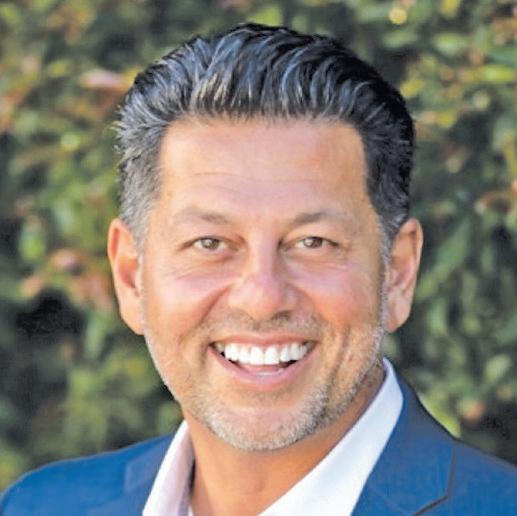
Sheriff’s detectives are investigating a homicide in the Santa Ynez area.
On Saturday at approximately 3:56 a.m., deputies responded to the 1000-block of Jason Way in Santa Ynez for an unknown type of emergency. When deputies arrived, they found an adult male victim. The suspect, who fled prior to deputies’ arrival, was


identified and deputies began searching the area.
Emergency personnel responded to attempt to treat the victim, who was declared deceased at the scene.
This investigation remains active and updates will be shared as they become available. Identities of the involved parties are not yet available for release.
- Katherine Zehnder






Continued from Page A1
original music and cover tunes of roots-rock, americana, countryblues and the glory days of 70s FM radio.















The celebratory convocation took place at 5:30 p.m. featuring a presentation by historian Neal Graffy and speakers who included Supervisor Gregg Hart, Mayor Randy Rowse and Congressman Salud Carbajal, according to Mr. Bruskin.
Concerts were going on all day and restaurants provided samples of their clam chowder. Attendees had the opportunity to enjoy lunch and dinner, shop at gift shops, enjoy ice cream and candy, do some wine tasting, take a water taxi ride, enjoy the Sea Center and have their palms read. The SBYC boat parade included the firing of the wharf’s cannon.
Fishing poles were made available for rent to those wanting to fish, according to Mr. Bruskin.
The day of family fun ended



Solvang is welcoming the season in true fall style as the Danish-themed village presents its 13th annual “Scarecrow Fest and Contest.”

During the month-long event, which began Oct. 1 and ends on Halloween, Oct. 31, businesses and organizations are featuring a scarecrow of their own creation posted at their location.
The 2022 festival includes the use of QR codes and a digital voting system as well as using traditional paper maps and ballots. Scarecrow maps will also be available on the website and inside local businesses, along with the corresponding QR codes.
Locals, tourists and area merchants can vote on the contest’s website, www. syvscarecrows.com, for Solvang scarecrow winners in six different categories: “Best Scarecrow Photo Op,” “Best Use of Recycled Materials,” “Best Use of Business Theme,” “Most Danish,” “Spookiest” and “Most Humorous.”
The six categories were selected through a conscious effort to nurture friendly competition and community among Solvang locals, to highlight the unique traits that Solvang possesses and to encourage mindful, eco-conscious creativity. Past years’ Scarecrow
Fests have received far-reaching publicity with visitors coming from as far away as Alaska.
Once this year’s “Best Solvang Scarecrow” has been chosen, the ultimate Santa Ynez Valley




Scarecrow Fest winner will be announced and celebrated. The overall winner will receive the contest’s exclusive, handcrafted trophy — the “Harvest Cup” — made by famed blacksmith, Hans Duus, which the winner can keep on display in their place of business until the conclusion of the following year’s contest.
Solvang Senior Center, a place where seniors find programs, activities and connections to resources to help them maintain their independence and age vibrantly, was awarded the 2021 Harvest Cup.
“This is the 13th year that the contest is being celebrated in Solvang, and other Santa Ynez Valley towns have embraced the ‘Fest’. The more that each town gets into this, the better the experience for both locals and visitors, whose community involvement and visits, respectively, benefit the local economy of the entire valley,” said Tracy Beard, executive director of the Solvang Chamber of Commerce.
Entries for the contest, which cost $25, are still being accepted.
Questions can be directed to the Solvang Chamber at mitzi@ solvangchamber.com.
The chamber can also provide prospective participants with further contest details, participant entry forms and “Scarecrow Tips and Tricks.” Updated information about this year’s Solvang Scarecrow Fest will continue to be posted at www.syvscarecrows. com.
October
ARIES — The year 2022 will be over before you know it, and you might ask yourself what you can do to make your community a better place, especially when Vesta moves forward in your humanitarian zone on Wednesday. This is an ideal time to do some volunteer work to help your neighborhood.
— After a busy summer, you’re ready to focus on your goals and ambitions this week, Taurus, starting when Vesta moves forward in your career zone on Wednesday. Now is a great time to start building your reputation, which means a lot of networking and helping others in your field to get ahead.
GEMINI — Aspire to be the change you want to see when Vesta moves forward in your expansion zone on Wednesday, opening your eyes to the world around you. Talking to people from all walks of life will help you develop new ideas and understanding.
CANCER — October is a month of serious commitments, starting with Vesta moving forward in your intimacy zone on Wednesday. This asteroid encourages you to create a support network that can assist you in every way.
LEO — After a summer of love, spend the fall building a relationship that can last when Vesta moves forward in your partnership zone on Wednesday. Shift your mindset from “me” to “we” and dedicate yourself to focusing on the needs and desires of your partners and developing the important relationships in your life.
VIRGO — After a carefree summer and a stressful retrograde, it’s time to work on your self-discipline when Vesta moves forward in your habit zone on Wednesday. It’s time to recommit yourself to productive routines and take care of the important people in your life and your community as a whole.
LIBRA — Start your week on a fun note when Vesta moves forward in your creativity zone on Wednesday. Dedicate yourself to your talents, especially with Halloween on the horizon. You deserve to express yourself in any medium you choose, Libra.
SCORPIO — After a stressful retrograde season, it’s time to do some self-care this week as Vesta moves forward in your home zone on Wednesday. However, Scorpio, it’s not just about you; it’s about your family as well. So take care of your private life and build a solid fountain for the people you love.
SAGITTARIUS — After a flighty few months, you’re ready to commit yourself to learning when Vesta moves direct in your communication zone on Wednesday. This is a great time to look at the ways you use and share information with others.
CAPRICORN — The year 2022 will be over before you know it, Capricorn, so you’d better get your financial life in order when Vesta moves forward in your wealth zone on Wednesday.
AQUARIUS — Aspire to be your best self now that Vesta moves forward in your sign on Wednesday. This is an ideal time to show yourself off in the best light possible and make a good first impression on others. It could lead to bigger things down the road, Aquarius.
PISCES — Get ready for a season of self-acceptance when Vesta moves forward in your subconscious zone on Wednesday. Now that Vesta is direct again, you can stop escaping into self-destructive habits and focus on inner healing.
194171987 1187212323202518132321 2118198882 1821218262214721181117 26141711724 22921232311108713814 872013157 221916821122212181911 7132147311 6222311781211218208

 By FRANK STEWART Tribune Content Agency
By FRANK STEWART Tribune Content Agency
The problem with problems is that as soon as one is solved, another will pop up for you to deal with.
That’s just life, but if you prioritize your problems, they can be easier to deal with.
According to a recent article in Psychology Today, taking back control of your day and agenda is key to stepping out of the overwhelm. Considering your priorities and commitments, and moving or removing what is not aligned with them, can help.
F. Diane Barth, a licensed clinical social worker, suggests making a list of things that are overwhelming you, such as tasks you need to accomplish, goals you’ve set for yourself, and things that worry or distress you.
List making is a tried-andtrue method for organizing your thoughts and getting your fears into perspective. And the No. 1 thing on your list needs to be making an agenda.
Once you write down your problems and organize them by deadline, importance or the amount of anxiety they are causing you, it will put things into perspective and give you a timeline to follow. This way you don’t have to think about what’s coming next but can handle one thing at a time until they are all done.
Emotional attachment to getting it all done is what commonly causes anxiety — and I like to do a little yoga or meditation or go outside first thing in the morning to get my head in the right space. Reducing anxiety is always first on my agenda. With anxiety cleared away, everything else becomes much easier. Your mind is free to think more clearly, and you will be able to see a path for completing your other tasks.

 By MARILYN MCMAHON NEWS-PRESS STAFF WRITER
By MARILYN MCMAHON NEWS-PRESS STAFF WRITER


Donna Weidl, a senior vice president and financial advisor with the local branch of Merrill Lynch Global Wealth Management, has joined the board for the Scholarship Foundation of Santa Barbara.
Born in Qingdao, China, Mrs. Weidl immigrated to the United States at age 7 before attending San Marcos High School and Santa Barbara City College. She went on to become the first person in her family to graduate from college, earning a bachelor’s degree in global business at Cal State Channel Islands with assistance from the Scholarship Foundation.

Mrs. Weidl began her career in wealth management at Merrill Lynch in the midst of the global financial crisis in 2009 and has since earned five professional certifications and designations: Certified Financial Planner, Certified Private Wealth Advisor, Chartered Retirement Planning Counselor, Certified

Divorce Financial Analyst and Certified Plan Fiduciary Advisor.





In August, she was named to Forbes’ “Best-in-State NextGeneration Wealth Advisors” list.

“Donna’s life story is inspiring, and she is an energetic advocate for expanding educational opportunities in our community. She is an outstanding addition to our board of directors,” said Barbara Robertson, foundation president and CEO.
Celebrating its 60th anniversary this year, the Scholarship Foundation of Santa Barbara is the nation’s largest community-based provider of college scholarships, having awarded more than $140 million to some 60,000 county students since its founding in 1962.

The foundation also provides free financial aid advising services. For additional information, visit www. sbscholarship.org.

email: mmcmahon@newspress. com
Ms. Barth recommends that you break your problems down into little steps to make them easier to accomplish. One small movement forward is all you need to get started.
So if you are feeling overwhelmed because you are looking at the whole problem, the first step may be as simple as opening your computer.
Another tool that may come in handy is to deal with your most complicated issues first rather than put them off. The most successful people I know take on their most complicated issues in the morning. If the task can’t be completed, they return to it the next day.
I like to write in the morning, but if something is vexing me, I need to get that out of my head before I can be creative. Once my mind is clear, I can go on with my

work, which is very different from problem solving.
When you can do both — problem solving and getting your work done — you will find yourself feeling much better about your life as a whole.
So if you’re feeling overwhelmed, try making a list and planning your day around the things you need to do to get your life in order.
Once you get used to this process, you will find that it’s a motivator in itself, because by the end of the day you are feeling pretty good about yourself.
Barton Goldsmith, Ph.D., is an award-winning psychotherapist and humanitarian. He is also a columnist, the author of eight books and a blogger for PsychologyToday. com with more than 28 million readers. He is available for video consults worldwide. Reach him at barton@bartongoldsmith.com. His column appears Sundays and Tuesdays in the News-Press.




























We are now less than a month away from the 2022 national election, and the results of those races should be a positive for the stock market — and the country.
When Congress reconvenes in January 2023, I feel confident there will be a Republican majority in the House of Representatives, with a pick up of probably 22 to as many as 40 seats if a real Red Wave takes hold.
And a Republican-led Senate is a distinct probability.
The latest Gallup Poll (Sept. 1-16) has respondents choosing the Republican Party over the Democratic Party 48% to 37% as the party than can do a better job of dealing with what those polled see as the most important issues: the high cost of living/ inflation, the economy in general, poor government leadership, immigration and race relations.

Democrats are scrambling to alter that impression and with the help of a more-than
compliant media the party has been somewhat successful turning voters’ attention to abortion and … Donald Trump.
But as I see it, not nearly enough minds have or will re-focus away from the battered economy and poor leadership in the White House to make much of a dent in the likely outcome.
Based upon everything I’m reading, viewing, listening to, hearing and taking in, the following is how — as I see it — this election will go.
North Carolina: Rep. Ted Budd squeezes out a victory over Cheri Beasley (51/49).
Ohio: J.D. Vance takes out Tim Ryan (55/45).
Pennsylvania: Dr. Mehmet Oz wins over John Fetterman (51/49).
PURELY POLITICALArizona: Blake Masters beats Sen. Mark Kelly (50/50).
New Hampshire: Ron Bolduc loses to Maggie Hassan (48/52).
Florida: Sen. Marco Rubio easily defeats Val Demings (56/44).
(70/30).
Iowa: Sen. Chuck Grassley beats Mike Franken (60/40).
Connecticut: Wish it could be otherwise, but Leora Levy loses to Sen. Richard Blumenthal (47/53).
Kansas: Stays red as Sen. Jerry Moran beats Mark Holland (80/20).
Illinois: Another state that needs help but looks like Kathy Salvi loses to Tammy Duckworth (47/53).
Oregon: Republicans making progress, but Jo Rae Perkins loses to Wyden (47/53).
Nevada, Warnock in Georgia and Kelly in Arizona). Republicans also win 8 seats with no incumbent but all of which lean heavily Republican and hold on to the rest of their current seats, which have little or no competition.
Two and half years ago, George Floyd was arrested and killed by police officers 2,000 miles away in Minneapolis.
The officers involved have been found guilty in his murder.
Across the country, the Black Lives Matter organization began demanding defunding of the police and extreme oversight of police departments. City councils cowered in obedience. Crime began to rise to historic heights everywhere these demands were met. Police effectiveness in deterring crime and catching criminals collapsed.
Morale tanked in police departments and caused an exodus of officers. Those who remained, became hamstrung by the demonstrations of mob mentality, and a diminished police force. In many cases, officers would not patrol the “No-Go” areas.
Criminals were emboldened; crime was widespread. Police departments could not cope. To reduce the burden, more crimes were reduced to misdemeanors. Crime of all kinds escalated again.
Vulnerable families suffered the most. Stores and businesses closed, or moved, to avoid criminals who were destroying their businesses. Illegal drugs began to rule the streets. Deaths from drugs began to rise at a rate of 15% or more a year. By April 2022, drug deaths in the U.S. reached a rate of 105,000 a year.
One way to reduce the effectiveness of police departments is to take away their funding. Another way is to impose a form of draconian oversight, consisting of a kind of Kangaroo court accompanied by inquisitorial interrogations by uninformed, politically motivated, individuals.
First, a rundown of all the U.S. Senate races, with the first name being Republican and the second Democrat, along with my guess at the odds of what I predict will happen:
James BuckleyNevada: Adam Laxalt beats Sen. Cortez Masto (52/48).
Georgia: Herschel Walker ousts Sen. Raphael Warnock (52/48).
Wisconsin: Sen. Ron Johnson over Mandela Barnes (60/40).
Colorado: Democratic Sen Michael Bennet wins hands down in the race with Republican Joe O’Dea.
Utah: Sen. Mike Lee wipes the floor with Evan McMullin (70/30).
Washington: Tiffany Smiley has a fighting chance to overtake Sen. Patty Murray (49/51).
Indiana: Sen. Ted Young beats Tom McDermott (70/30).
Missouri: Eric Schmitt wins easily over Trudy Busch Valentine
Louisiana, Kentucky, South Carolina, Arkansas, Alabama, Idaho, Oklahoma (2 seats up here), South Dakota, North Dakota, and Alaska remain in the Red (Republican) Zone California, Vermont, New York, Maryland and Hawaii sadly remain deep blue.
The count is 24 Republican senators in the winning column, versus 10 Democrat victors and one undecided.
This scenario has Republicans beating three Democrat incumbents (Cortez Masto in
If any semblance of this prediction holds, Republicans will come out of the 2022 election season with a 53/47 majority in the Senate and if the toss-up goes against Murray in Washington, a 54/46 split. If things go badly for Republicans, it is possible Democrats hang on to a 50/50 Senate, but as a betting man, I’m going with the momentum play, which favors Republicans.
As a former president often remarks, we’ll see what happens.
James Buckley is a longtime Montecito resident. He welcomes questions or comments at jimb@ substack.com. Readers are invited to visit jimb.substack.com, where Jim’s Journals are on file. He also invites people to subscribe to Jim’s Journal.

T he West is experiencing its third energy crisis. The first, in 1973, was caused by the nearquintupling of the price of crude oil by Gulf oil producers in response to America’s support for Israel in the Yom Kippur war.
Their action brought an end to what the French call the trente glorieuses — the unprecedented post–World War II economic expansion.
The second occurred at the end of the 1970s, when Iran’s Islamic revolution led to a more than doubling of oil prices. This again inflicted great economic hardship, but the policy response was far better.
Inflation was purged at the cost of a deep recession. Energy markets were permitted to function. High oil prices induced
substitution effects, particularly in the power sector, and stimulated increased supply. In the space of nine months, the oil price cratered from $30 a barrel in November 1985 to $10 a barrel in July 1986. It’s no wonder that the economic expansion that started under President Ronald Reagan had such long legs.
DarwallThis time is different.
The third energy crisis was not sparked by Saudi Arabia and its Gulf allies or by Iranian ayatollahs. It was selfinflicted, a foreseeable outcome of policy choices made by the West: Germany’s disastrous Energiewende that empowered Vladimir Putin to launch an energy war against Europe; Britain’s selfregarding and self-destructive
policy of “powering past coal” and its decision to ban fracking; and, as Joseph Toomey shows in his powerful essay, President Joe Biden’s war on the American oil and gas industry.
Hostilities were declared during President Biden’s campaign for the Democratic presidential nomination. “I guarantee you. We’re going to end fossil fuel,” candidate Biden told a climate activist in September 2019, words that the White House surely hopes get lost down a memory hole. Mr. Toomey’s paper has all the receipts, so there’s no danger of that. As he observes, Mr. Biden’s position in 2022 resembles President Barack Obama’s in 2012, when rising gas prices threatened to sink his reelection.

President Obama responded with a ruthlessness that his erstwhile running mate lacks. He simply stopped talking about climate and switched to an allof-the-above energy policy, shamelessly claiming credit for the fracking revolution that his own EPA tried to strangle at birth.
Passage of the comically mistitled Inflation Reduction Act places this option beyond President Biden’s reach, even if he were so inclined. Democrats are hardly going to take a vow of climate omertà when they’ve achieved a political triumph of pushing through Congress what they regard as the most significant climate legislation to date. Although the price of oil has slipped back from recent highs, the
The same knee-jerk reaction to the inexcusable death of George Floyd in many large cities, was repeated in the city council of the small town of Santa Barbara. It was prompted by fear of the local, self-appointed, branch of Black Lives Matter.
Black Live Matter representatives demanded the creation of a very one-sided police oversight commission. It was not an overt attempt to defund the Santa Barbara police department. But the proposal, as written, would have weakened the effectiveness of our department in its role to protect the public from criminals. Santa Barbara does not suffer the corruption and the behaviors in the police department that may occur in large cities and should be judged as such. A one-size narrative does not fit all.
Fortunately, most of the members of the Santa Barbara City Council, including Mayor Randy Rowse, saw the dangers in approving the recommendations as written. A modified proposal was given to the city staff to produce an ordinance, which they did remarkably well.

As approval of the staffdrafted ordinance was being finalized for submission to the city council, Councilmember Kristen Sneddon inserted very significant changes that she had received by email. This was without being presented to the public for review, and without discussion among her colleagues on the council’s Ordinance Committee, Mike Jordan and Oscar Gutierrez.
The first change included is to eliminate any person of professional police experience, or deep knowledge of police



The Santa Barbara County Board of Supervisors is set to adopt an “electrification ordinance” that will prohibit natural gas appliances in new construction and large remodels.

This ordinance is a superfluous effort in virtue signaling as it will at best reduce the county’s total greenhouse gas emissions by a mere 10,000 metric tons, which equates to less than a 1% reduction.
Of course, these numbers are actually all meaningless because the county omits in its inventory the emissions from natural sources, including our ginormous offshore oil and gas seeps. All emission reductions here locally from sources other than transportation and offshore seeps are quantitatively zero!
This effort is also redundant. The state of California recommends all-electric buildings become standard for residential construction starting in 2026 and nonresidential construction starting in 2029. Why must these supervisors jump the gun?
This ordinance is also unrealistic because California does not have enough electricity to keep the grid operating right now before we also mandate the electrification of all cars and trucks.
As California had to forestall the closure of the Diablo Canyon Nuclear Power Plant because we could not do without the energy it generates — a “mere” 10% of the state’s baseload. Yet we can somehow do without fossil fuels and other “non-renewables,” which generate upward of 78% of electricity we share continuously with a Western States energy consortium?
Moreover, the existing grid is not capable of handling the extra load of going all electric regarding either transportation, residential and/or commercial natural gas usage. This includes the ability to move this electricity from renewable power sources and distribute the same throughout the community.
That is, the need to create, distribute and store electricity from renewables presents an enormously expensive (financial cost) and unrealistic (the amount of land necessary) scenario as the production from the same typically occurs during off-peak demand usage. For instance, solar
panels are most efficient between 10 a.m. and 2 p.m. while the peak demand for electricity is after 5 p.m.
The use of natural gas is the most environmentally friendly and affordable form of energy available.
It burns clean, and it does not present the ecological costs associated with the procurement of raw materials by way of pit mining, the enormous amount of energy required to manufacture solar panels (in China using coal as a power source), not to mention the ecologically disastrous disposal costs of solar panels. By going all in on solar today, California is thereby creating tomorrow’s superfund site.
This was recently acknowledged by the Los Angeles Times, which reported that “discarded solar panels are likely contaminating landfills across California. (I)t once again shows that the rush to adopt green energy policies may have unforeseen consequences” (The same holds true for electric vehicle batteries).
Specifically, as another Los Angeles Times story pointed out, “The California Department of Toxic Substances collected its first data on panels recycled by universal waste handlers in 2021. For handlers that accepted more than 200 pounds or generated more than 10,000 pounds of panels, the DTSC counted (a mere!) 335 panels accepted for recycling! The department expects the number of installed solar panels in the next decade to exceed hundreds of millions in California alone, and that recycling will become even more crucial as cheaper panels with shorter life spans become more popular.”
Er, read that as our nonexistent recycling program!
The supervisors should cease and desist in this effort as it never makes sense to put all your eggs in one basket, especially when so many of their eggs are obviously cracked! After our impending energy fall (Europe is going down first as we speak!), will anyone be able to put Humpty Dumpty back together again?
Andy Caldwell is the COLAB executive director and host of “The Andy Caldwell Show,” airing 3 to 5 p.m. weekdays on KZSB AM 1290, the News-Press radio station.

We are only about a month out from another election, and I would like to offer some thoughts for your consideration.
No matter your party or beliefs, you and I can agree that there are problems at the local, state and federal levels.
We can also agree that we did not create the problems, that they were created by the policies enacted by our elected officials.
So I propose that we vote for no candidate with “incumbent” beside their name.
We should not vote for anyone who has been in their office for two terms or more. They have demonstrated they are now part of the problem and not a part of the solution.
And we should definitely not vote for anyone who has been in any elected office longer than a total of 15 years. Professional politicians are a cancer we need to eliminate from our society.
Let us send a clear message that we want new ideas and people who are not hoping for a career rather than professional politicians hopping from one job to the next and preaching that “experience” and “proven leadership” count for something.
We do not need more party lapdogs or “public servants” under the thumb of special interests.
Let us make the phrase “professional politician” have the same impact as the racial slurs so common in the 1950s and 1960s.
And let us get our elected officials to pass a federal term limits law.
Curtis Warner Santa Maria
a full one percent (1%) increase from 7.75% to 8.75%. This is a 13% increase in sales tax.
3. There is no need for a 13% increase in sales tax with inflation. Sales tax revenues increase as prices increase. You already pay more to the government with inflation. With 10% inflation, the government’s sales tax income increases by 10%.
4. Sales tax revenues were at record levels in 2021. According to the recent State of the City presentation by the city manager, sales tax and bed tax revenues broke all the highest revenue records last year.
5. Passage may decrease sales tax revenue. People shop with their dollars so many will go to Buellton or Santa Ynez for shopping instead of their hometown to save sales tax expenses resulting in lower sales tax revenue for Solvang.
6. This tax increase puts Solvang at a competitive disadvantage to other communities. Business is competitive enough on an equal sales tax footing, but to vote to handicap yourselves with a higher sales tax makes no sense.
7. The city says it is for essential services. When did our 7.75% only pay for non-essential services? We taxpayers did not approve our tax money for non-essential services. Let’s start with essential services first before passing more taxes to pay other non-essential services.
8. Saying groceries will not be taxed by this measure is misleading. Groceries are already exempt from sales tax in California already. This is another deceptive argument to try to fool you, the smart voter.
9. This is not a “tourist only” tax. There is no exemption for locals from the tax.
Solvang’s budget is approximately $18 million per year with a population of approximately 6,200. Smart voters in Solvang believe the city can operate effectively at this revenue level without this tax increase.
 Allan Jones Solvang
Allan Jones Solvang
I encourage Goleta voters to support Measure B sales tax.
As a Goleta City Council member, I hear from constituents who want more city investment in things that will benefit our community — investments that would improve the quality of life for our residents and strengthen our economy.
Opponents of Measure B say that we should “tighten our belts” and “focus our priorities.” The truth is we don’t have excessive budgetary slack, and we have a large number of unfunded needs. Which should we push down on the list and ask our residents to do without?
Our sheriff’s contract is the city’s single largest expense, and it’s growing. Do we cut back on public safety? What about Fire Station 10, which is sorely needed to provide fire protection services to western Goleta?
The Community Center, which houses a senior program and serves residents in Old Town and beyond? And what of the resources needed to clean up our creeks or maintain the Lake Los Carneros open space? How about our library or roads?
Vineyard’s receiving 50 visitors in September catapulted it into a leading news story. Why?
Martha’s Vineyard, aka “the Vineyard,” is a 96-square mile island in the Atlantic Ocean seven miles from Cape Cod, Mass., which is only accessible by ferry or planes.
Approximately 56%, or 8,187, of the 14,621 houses, are only occupied seasonally, meaning hundreds of rooms are available every September as are the hotel rooms that house many of the 80,000 summer tourists.
The remoteness — and controls on development — have contributed to the desirability of the lifestyle that has led to an average house cost of $1,035,000. The imbalance of the wealth of the summer residents compared to the year-round residents, was exacerbated by the flexibility of working remotely during COVID, as was discussed in my article “Pre-covid, Covid and Post-Covid,” in the Sept. 18 Voices section of the NewsPress.
Three events are illustrative of the attitudes on the island:
• On the night of July 18, 1969, after U.S. Sen. Edward “Ted” Kennedy, D-Mass., drove off a bridge near the island town of Chappaquiddick, he walked away leaving his passenger, Mary Jo Kopechne, trapped in the underwater car. He was not prosecuted.
• Director Steven Spielberg shot the 1975 movie “Jaws” on Martha’s Vineyard, where he showed the authorities on the fictional Amity Island trying to deny a problem that might negatively impact tourism.
ere are the top 11 reasons to vote “no” on the Solvang sales tax increase.
1. It hurts the poorest and elderly the most. The reason is that the poorest have a higher proportion of their income spent on products that are taxed just to get by. Those in favor of this tax do not care about the elderly, widows, widowers, and those on very low fixed income in Solvang.
2. The title is deceptive and misleading. The ballot reads a “1 cent” increase in sales tax in the ballot language. Let’s clarify: It is
Proponents of this tax increase say that the tourist pays most of the sales tax so they should pay their fair share. If you shop in Solvang, you will pay it whether you are a tourist or not. Some of the largest sales taxpayers are nontourist businesses such as building supplies, hardware stores, grocery stores, and drug stores. This sales tax increase hurts contractors, local property owners, residents, employers, and employees.
10. The city is increasing your water and sewer rates dramatically. This alone is enough to vote no on a sales tax increase. City revenue will increase dramatically with the new rates.
11. It is never enough. Every tax increase never generates enough for the government. It is best to vote “no” to send a message to the city to live within its budget just like the rest of us have to do.
Goleta prides itself for being fiscally prudent, and the city wisely maintains substantial reserves and unallocated general funds. But reserves are meant only in the case of an emergency, and excess general funds are only temporary. Reserves are critical to have as a back-up — in case of a “rainy day” — but they aren’t permanent or ongoing. Once they’re spent, they’re gone.
The bottom line is that our community deserves to have programs and services that enrich our lives, and if the city is going to address these needs in a timely manner, then more funding is needed. Measure B will help fill the gap. Almost half the revenues from Measure B will be paid by non-Goletans, and it’s money that Santa Barbara County can’t touch.
Kyle Richards GoletaIhought about writing how the leftists turned hurricane Ian, like every disaster, into another moment for political gain even before the first house was blown away. But too cliché.
Or expounding on the story of the school teacher kidnapped by a man with a long criminal record who was running around loose on the streets and how this young defenseless mom was shot in the back of the head. But that story was already buried along with Eliza Fletcher because it didn’t fit the leftist narrative based upon skin color.
Or about how the Biden group sold off a bunch of our oil reserves to China just in time for the U.S. to deal with a major natural disaster and the crisis like our war with Russia. But “oil bad, sun good,” even if it affects our national security. Or how House Speaker Nancy Pelosi said we need immigrants to pick the crops, which was an outright admission that the border is open. But I
need something to keep my blood pressure down before I can write about her. ‘
Or a column about how Vice President Kamala Harris finds the time to visit the border between North and South Korea and announces how America is good buddies with Kim JongUn, but we already know she’s a dim bulb, so that column would have been too short.
Instead I thought I’d tackle the topic of how good, upstanding, noncriminal citizens are being targeted in the same way Kamala’s friends in North Korea deal with its dissenters.
Case in point (fictious story based on fact). A Muslim man was outside an abortion clinic with his young son when he was approached by a pro-abortion activist. The activist, in true fashion, got in the face of the boy, and his father pushed him. What happened after that? Nothing.
He wasn’t a Catholic, and he didn’t fit the new American Gestapo’s profile as someone who
needs to be taught a lesson. Those lessons are reserved for American terrorists with seven children who go to church. Those are the people we have to worry about. Not the guy who beat the pulp out of a woman in the subway or dozens of kids going shopping without cash or credit cards.
Likely to never get the real truth, the district court in Philadelphia threw out the case.
But the Department of Justice couldn’t let go of a good old, “let’s rip this guy a new one because we can.” This will be another good intimidation case they said with glee. It’s not like we have anything else that’s really important, like investigating the president and his family colluding with China and Russia.
The stories are dreadful, and it’s hard to believe it’s becoming commonplace.
President Joe Biden’s people and his new Gestapo are operating under an old line, “It’s easier to ask for forgiveness than permission.” They are on a mad rampage to destroy as many American lives as they can in
• In 1999, John Kennedy, the son of President John F. Kennedy, a Democrat, crashed his plane while flying to the island, killing himself and his wife.

Mr. Spielberg showed the importance of tourism, and the Kennedys, the importance of being a Democrat. Indeed, 80% of the island’s residents voted for President Joe Biden, and President Barack Obama, a Democrat, built a mansion that is one of the 8,187 that are only seasonably occupied.
As with New York and San Francisco, the Democratic influence caused Martha’s Vineyard to declare itself a “sanctuary place,” which means places that do not deport illegal migrants. Until recently, this declaration was unfulfilled. It was a party without guests. Why?
The answer may have been provided by Vice President Kamala Harris, a Democrat and the U.S.’s “border czar,” when she said “We have a secure border in that it is a priority for any nation, including ours and our administration.” At first blush, this indicates that her policy is based on the song “Wishin’ and Hopin’ ” as under her administration there have been some 4.4 million border crossers. What did she mean?
The border czar appears to have meant that the “secure border” was the one protecting Martha’s Vineyard, her residence and other Democratic cities, as discussed in my NewsPress article “Sanctuary Cities ‘Walking the Walk’?” (Sept. 25 Voices section).
When Florida Gov. Ron DeSantis ended his “party with no guests” by offering 50 migrants a free flight to the sanctuary island in September, did the Vineyard welcome them?
Not really.
Massachusetts state Rep. Dylan Fernandes, Democrat, said, Gov. DeSantis’ actions were “fraud, kidnapping, deprivation of liberty and human trafficking”
happening. It’s been happening. Parents, you are being replaced.
Where? Right under your noses, in your neighborhoods, in your public and private schools, and in your local children’s hospitals.
How? Under the guise of health, safety, compassion, tolerance, diversity, intellectual superiority and, of course, the public good.
By whom? Woke educators, radical school counselors, gender queer-promoting librarians, meddling school-based health clinic staffers, Big Pharma drug and jab peddlers, and medical establishment “experts” like the ones at the American Medical Association, who, as investigative researcher and City Journal writer Christopher Rufo reported last week, are “asking Big Tech and the Department of Justice to censor, deplatform, investigate, and prosecute journalists who question the orthodoxy of radical gender surgeries for minors, arguing that public criticism is ‘disinformation.’”
It’s not just journalists that the AMA is targeting, but outspoken parents on social media who dare to question State Science and who fearlessly assert and defend their family sovereignty. As usual, questioning the authority of the elites is tantamount to threatening “violence, intimidation, and physical harm” — even as these
control freaks oversee the mass poisoning of vulnerable children’s minds and bodies across the country.
Why? Newly elected Italian Prime Minister Giorgia Meloni summarized it well in a viral 2019 speech at the World Congress of Families that Big Tech has tried to suppress.
“Why is the family the enemy?” she asked. “Why is the family so frightening?”
Michelle Malkin
Answer: “Because family is our identity. Because everything that defines us is now the enemy for those who would like us to have no identity and simply be perfect consumer slaves. That’s why they attack national identity, that’s why they attack religious identity, attack sexual identity, attack family identity. I cannot define myself as Christian, Italian, wife, mother, no. I have to be citizen X, gender X, parent 1, parent 2. I have to be a number ... That’s why we cause so much fear ... Because we don’t want to be numbers. We will defend the value of the human being ... We will defend God, country and family.”
Yes. We are more than just automatons and QR codes. Our children are more than just advertising-coveted eyeballs and addicted mouse-clickers, more than data-mining sitting
ducks and docile worker cogs in the globalist machine. Our children are more than just bottomless receptacles for the next government-subsidized, billion-dollar experimental drugs from cradle to grave — be they puberty-blocking hormones, lifestyle vaccines (Gardasil, PrEP), ineffective and natural immunity-undermining flu shots, anti-anxiety and anti-depressant pills, or experimental bivalent COVID booster jabs that have only been tested on a handful of mice.
Moms and dads, you are more than a pesky nuisance to the architects and engineers of the Great Parental Replacement.
You are a hindrance.
At Children’s Hospital of Philadelphia, the Daily Caller’s Chrissy Clark reported, a “Gender and Sexuality Development Clinic” has held 33 trainings in 15 schools over the past five years on “trans-inclusive policies” in which attendees are advised to “keep gender identity secret from parents.”
You are abusers.
At Children’s Mercy Hospital in Kansas City, Missouri, an academic “expert” claimed that parents “refusing pubertyblocking treatment” amounted to “psychological harm,” which she equated with physical abuse
that should be subject to criminal prosecution.
You are nosybodies.
In the U.S., 17 children’s hospitals have now hidden information about their gender transmogrification programs after parents exposed their practices. Most prominent among them: Boston Children’s Hospital and its demented program, HOTT (Health Outreach to Teens), which advises boys on how to “tuck” and tape up their penises to make them look like vaginas.
To distract from this perversity, Boston Children’s is playing the victim, decrying alleged threats of “violence” (cue the Southern Poverty Law Center smear machine). We’ve seen this playbook before. Remember: In 2013, young Justina Pelletier was ripped from her parents’ custody by Boston Children’s Hospital. The teen, who lives with mitochondrial disease and postural orthostatic tachycardia syndrome, had gone to BCH after coming down with a severe case of the flu. Instead of receiving top-notch care and attention at BCH, however, Justina was medically kidnapped and recklessly re-diagnosed with a psychological condition, “somatoform disorder.”
Justina was dragged from BCH’s neurology department to its infamous psych ward, where she was reprimanded for being unable to move her bowels or walk
unassisted in her weakened state.
At the Wayside Youth and Family Support Network residential treatment center, where she was confined, she and her family recounted to me in my 2018 documentary on the case, she was harassed by a staffer while taking a shower. The physical and mental torture lasted 16 months.
Doctors at BCH dubbed their evil practice a “parentectomy” — and this savage removal of parental rights has been repeated nationwide. The Pelletier family sued BCH and lost in early 2020, at exactly the time the World Economic Forum was ushering in the Great Reset and its replacement of sovereign nations and sovereign parents with drugpushing, gender-destroying, child-kidnapping, surveillancestate managers of the “global commons.”
It’s time for nuclear families to go nuclear on their enemies. That’s not a call to violence, but a call to protect your children’s minds, hearts, bodies and souls from those who seek to obliterate our identity, bonds and God-given rights.
Michelle Malkin’s email address is michellemalkinInvestigates@ protonmail.com. To find out more about Michelle Malkin and read features by other Creators Syndicate writers and cartoonists, visit www.creators.com.

Ian is gone, but the media’s myths about hurricanes live on.
Reporters say the federal government must direct disaster response, as if only the Feds have the knowledge and money to do it.
“Debate is already growing about how big federal aid must be,” says CNN.
Why?! Don’t they know that the government has no money of its own? That everything federal bureaucrats spend is taken from the rest of us?
They don’t think about that.
Federal “disaster relief” is doled out after storms because, as a New York Times headline put it, “A Big Storm Requires Big Government.”
But it doesn’t.
My video last week debunks four myths about hurricanes.
Myth No. 1: We need the Federal Emergency Management Agency for disaster relief.
That’s just dumb, given FEMA’s history of incompetence.
FEMA once spent millions on bottled water and expensive trailers for housing. Then they just left them on an airfield.
he U.S. Supreme Court began hearing cases for its new term, following its customary summer recess, on Oct. 3. If this court term is anything like the most recent one, conservatives and constitutionalists will rejoice. This most recent term, conservatives achieved secured massive wins on abortion (Dobbs v. Jackson Women’s Health Organization), gun rights (New York State Rifle & Pistol Assn. Inc. v. Bruen), and religious liberty (Carson v. Makin and Kennedy v. Bremerton School District), and another key win on rolling back the administrative state (West Virginia v. EPA).
Now, with such grotesque precedents as Roe v. Wade and Lemon v. Kurtzman properly overturned, will the court continue to move rightward? Put another way, was the 2021-2022 Supreme Court term a mere blip on the radar, or the beginning of a broader, meaningful conservative legal restoration?
While it is unclear, and there are fewer “culture war”-centric cases on the docket this term than there were last term, there is still reason for cautious optimism in some of the marquee impending cases.
The biggest cases before the Court this term, perhaps by far, are the two cases pertaining to noxious race-conscious affirmative action admissions policies at universities: Students for Fair Admissions Inc. v. President & Fellows of Harvard College, which will apply to
private universities, and the sister case of Students for Fair Admissions Inc. v. University of North Carolina, which will apply to public universities. The two cases had been “consolidated” together, meaning they were to be decided in unison, before then being “de-consolidated” to permit Justice Ketanji Brown Jackson — who will have to recuse herself from the Harvard case — to participate in at least one of them. But the legal issues are effectively
identical, so the two cases should come out the same way.
The court most recently upheld race-conscious university admissions policies in the 2003 case of Grutter v. Bollinger, in which Justice Sandra Day O’Connor’s majority opinion explicitly stated that “raceconscious admissions policies must be limited in time,” and added that the “court expects that 25 years from now, the use of racial preferences will no
longer be necessary to further the interest approved today.”
In fact, not only did the Grutter Court presciently telegraph its own ruling’s possible demise in the twin SFFA cases, but affirmative action is also one rare area where even Chief Justice John Roberts has shined as a voice of sanity.
After all, Justice Roberts joined Justice Samuel Alito’s antiaffirmative action dissent in 2016’s Fisher v. University of Texas,
and earlier penned perhaps his most famous line in the 2007 race-conscious education case of Parents Involved in Community Schools v. Seattle: “The way to stop discrimination on the basis of race is to stop discriminating on the basis of race.”
There is thus a very strong chance the court finally ends vile affirmative action policies, which, contrary to Black Lives Matter propaganda, represent the genuine last remnants of “systemic racism” in America — this term. The ultimate cherry on top would be if Justice Clarence Thomas, a long-time archfoe of race-conscious admissions policies, writes the majority opinions in the two SFFA cases, formally overturning both Grutter and 1978’s Regents of the University of California v. Bakke and thus sending “systemic racism” to the ash heap of history. Hopefully, he gets that opportunity.
The other big “culture war” case this term is a First Amendment/ religious liberty-adjacent case out of Colorado: 303 Creative LLC v. Elenis. Sound familiar? It should: The court ruled on a similar First Amendment/religious liberty case out of Colorado just five terms ago, in Masterpiece Cakeshop v. Colorado Civil Rights Commission.
But in Masterpiece Cakeshop, the Justice Anthony Kennedyled Court majority issued an extremely narrow ruling that redounded to Christian cake baker Jack Phillips’ case-specific free exercise interest, but failed to render a constitutionally meaningful judgment about the thorny intersection of nondiscrimination law, freedom of speech and freedom of religion.
The fact that the court granted certiorari in 303 Creative LLC and
October is the scary month, and not just because of Halloween.
Six decades ago, the Cuban Missile Crisis brought the world to the very brink of nuclear holocaust. During Oct. 22-28 1962, Washington and Moscow sparred on the edge of thermonuclear war.
The lessons remain of fundamental importance.
They include difficulty of securing accurate intelligence, and the unpredictability of events.
On Oct. 14, 1962, U.S. reconnaissance photos revealed the Soviet Union placing offensive nuclear missiles in Cuba, despite contrary assurances. After the developed film was thoroughly reviewed, National Security Adviser McGeorge Bundy informed President John F. Kennedy.
Senior Kennedy administration officials, with the exception of CIA Director John McCone, assumed
Moscow would never put longrange missiles into Cuba. But U.S. actions against Cuba’s communist regime, including secret efforts to kill leader Fidel Castro, alarmed Soviet leader Nikita Khrushchev.
Earlier, the White House curtailed Cuba reconnaissance flights, resuming only because Mr. McCone insisted. Photographic evidence of the missiles arrived just before they would become operational.
However, there were already indicators, including from reliable Cuba agents, that something of this nature was under way. Senior officials convinced themselves otherwise.
President Kennedy and his advisers spent a week debating options.
At the start of the crisis, there was strong sentiment, especially among the Joint Chiefs of Staff, for a conventional air attack, followed by invasion of
Cuba.
J.F.K. imaginatively decided instead on a naval “quarantine” as the U.S. first step. His televised speech on Oct. 22 demanded removal of the missiles and announced initial moves, reflecting careful, thoughtful planning. Until the Kremlin agreed to withdraw the missiles, Armageddon loomed.
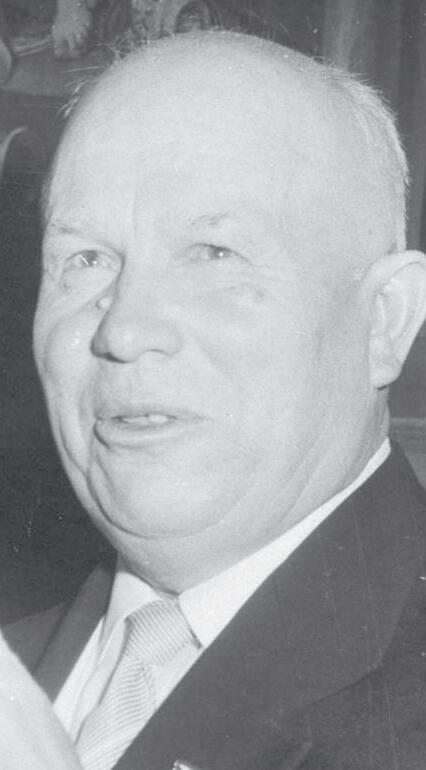

Years after the crisis, decisionmakers from Cuba, the Soviet Union and the United States initiated a series of meetings, which have revealed important new information. Soviet commanders in Cuba already had shorter-range nucleararmed missiles, and for a time independent authority from Soviet leader Nikita Khrushchev to use them if U.S. military forces invaded.
Soviet submarines had nucleararmed torpedoes. The torpedo
Matt Mayer worked at the Department of Homeland Security during Hurricane Katrina. He says the federal government was just too bureaucratic to be much help.

“States, locals, communities, neighbors” just do a much better job, Mr. Mayer told me.

FEMA fails because, like all government bureaucracies, there’s no incentive to spend efficiently. Charities are more flexible, and “they’ve been doing it for 200 years.”
Right now in Florida, while some people wait for FEMA, religious charities help people rebuild.
Myth No. 2: Government must stop greedy businesses from abusing customers.
Some businesses do raise prices when storms approach. Politicians call that “illegal price gouging.” This is just dumb, if not cruel.
When storms approach, people rush to buy supplies. If stores don’t raise prices, people buy anything they might possibly need, and probably some stuff they won’t need. The first shoppers buy extra bottled
Your opinions are valuable contributions to these pages. We welcome a variety of views.
Letters must be exclusive to the News-Press. In most cases, first priority for immediate publication goes to those submitted by 6 p.m. Tuesdays.
We encourage brevity, and shorter letters have a better chance of being printed immediately.
We edit all submissions for length, clarity and professional standards.
We do not print submissions that lack a civil tone, allege illegal wrongdoing or involve consumer complaints. We also may decide not to print letters or op-eds for other reasons.
Limit your letters to one every 30 days. All letters must include the writer’s address and telephone number for verification. We cannot acknowledge unpublished letters.
We prefer e-mailed submissions.
If you send attachments, please send word documents. We can’t guarantee that we can open a PDF.
Send letters to voices@ newspress.com. Writers also may fax letters to 805-966-6258.
Mail letters to P.O. Box 1359, Santa Barbara 93102.
The News-Press reserves the right to publish or republish submissions in any form or medium.
5277
activities, as a member of the oversight commission. The second change is that oversight committee members are not required to have a four-hour ride-along experience with officers on patrol to gain an understanding of the on-the-job work of police officers.
Both these changes eliminated provisions specifically included by retiring Interim Police Chief Bernard “Barney” Melekian to ensure knowledge, balance and objectivity in the work of the oversight board.
These two changes follow the Black Lives Matter handbook of extreme bias against the police, who are the first line of defense for families, neighborhoods and local businesses against personal and property crimes, drug dealers, homicides, etc.

The Ordinance Committee voted 2 to 1 to change the draft ordinance by removing two important provisions that are essential for oversight commission knowledge, objectivity and balance, by outgoing Police Chief Melekian.
Councilmember Jordan was the dissenting vote. It seems that Councilmembers Sneddon and Oscar Gutierrez felt that with Chief Melekian out of the way, they could execute a last-minute ambush of the process to remove these provisions. It appears that Councilmember Jordan is a man of integrity, who was not willing to collaborate in this plot.
Did You Know? urges Santa Barbara City Council members not to accept any of the proposed
changes that will discredit the impartiality of the oversight commission from day one. Or they will rue the day, when division and dissension, among the police department, the oversight commission and the city council boil over, accompanied by rising crime throughout the city. FYI, this important issue is up for vote this Tuesday.
Speaking of impartiality, oversight and fairness, did you know that the federal Treasury Department now has a 25-member Advisory Committee on Racial Equity? This committee will identify, monitor and review aspects of the domestic economy that have directly and indirectly resulted in unfavorable conditions for people of color.
This committee seems to be a cover for implementing preordained racial theories and strategies that are racial preferences, by intent. The legal and social rejections of failed experiments in Affirmative Action are to be replaced by creating government agencies to dictate the same thing, doubled down.
The vice chair of this committee is Felicia Wong, a former executive of a network of liberal mega donors formed, in part by, George Soros.
In 2016, Ms. Wong co-authored a report that argued for all police budgets to be reduced and for equity of outcomes, not equality of opportunity. She wants to reimagine capitalism and what she terms “racial justice,” at the center of all government policymaking.
Last year, Ms. Wong participated in writing a report published by the Roosevelt Institute, which praised the idea of income redistribution and focused on government policies to abandon equality of opportunity, for equity of outcomes across the board. What, me work?
Ms. Wong and others of the same mind have argued that the Supreme Court practice of racial neutrality makes it impossible to dictate racial preferences to correct structural racial inequities. In other words, she wants to create racial conflicts to redistribute income and benefits to the preferred racial groups.
Given the multiplicity of racial and ethnic groups in America, what is to be the racial pecking order? One must assume that being determined as “white” would put one at the bottom of the pecking order. But how are all the other, so-called “people of color” to be ordered in preference?
One can conclude that President Joe Biden and Treasury Secretary Janet Yellen, led along by people such as Felicia Wong, are now taking this nation along the path toward the utopian visions of the Extreme Left.
We can see the results of these alt-left tendencies in other countries to foretell the future that President Biden, Secretary Yellen and Vice Chair Wong have in mind for the rest of us.
Heaven help us.
Bonnie Donovan writes the “Did You Know?” column in conjunction with a bipartisan group of local citizens. It appears Sundays in the Voices section.
to buy.
water, generators, sandbags, etc.
Stores sell out, so only the quickest customers get what they need.
But if stores raise prices for items in demand, fewer people hoard, and more people get what they need. Yes, it’s tough on poorer people, but the price boosts give stores extra incentive to restock.
Prices quickly come back down. Banning price increases harms more people.
After Hurricane Katrina, when John Shepperson learned that parts of Mississippi lost power, he bought 19 generators, left the safety of his home and drove 600 miles to the disaster area. He offered to sell his generators for twice what he paid for them. People were eager
But Mississippi police called that “gouging.” They jailed Mr. Shepperson and confiscated his generators.
I bet the cops used the generators themselves.
What the law calls “gouging” is just supply and demand. It saves lives.
Myth No. 3: Hurricanes are getting worse.
The media say, “Storms are getting worse because of human caused climate change!” Are these “climate experts” sure it’s “human-caused”? All of it? Never mind.
When I showed a video of reporters talking about hurricanes getting stronger to the late climatologist Pat Michaels, he shouted, “No, they aren’t!
Look at all the hurricanes around the planet. We can see them
since 1970 because we’ve got global satellite coverage. We can measure their power ... There is no significant increase.” There isn’t.
Even our government’s National Oceanic and Atmospheric Administration admits, “There is no strong evidence of centuryscale increasing trends in U.S. ... major hurricanes.”
There may be evidence in the future. But there isn’t now. That doesn’t stop media fools from saying there is.
Myth No. 4: America must have government flood insurance. After all, private flood insurance costs “too much.”
But private insurers charge more for good reason: Homes in flood zones are more likely to flood.
That’s why federal flood insurance is a scam and a handout that rips off taxpayers.
I should know. I once built a house near the ocean.
It was a stupid idea. The ocean was a stone’s throw away.
Private insurers wanted fat premiums. I couldn’t afford that. I wouldn’t have built had I not discovered cheap government insurance. Thanks, Uncle Sam!
Ten years later, my house washed away. It was upsetting, but I didn’t lose money. You covered my loss.
I won’t do it again, but others will.
Until we learn the myths about government “help,” we’ll keep making the same costly mistakes.
Every Tuesday, John Stossel posts a new video about the battle between government and freedom at JohnStossel.com. For other Creators Syndicate writers and cartoonists, visit www.creators.com.
Continued
opted to hear the case, especially coming so soon after Masterpiece Cakeshop and due to the court’s notable personnel changes since 2018, strongly suggests that the court is prepared to issue a more sweeping ruling. Here, that would entail ruling in favor of Lorie Smith’s claim that her creation of a wedding planning website is constitutionally tantamount to “pure speech” — and that her website’s commercial activity thus falls under the First Amendment’s strong protective ambit.
Tenth Circuit Judge Timothy Tymkovich wrote a powerful and inspiring dissent last year, when this case reached his appeals court panel. That dissent could, and should, serve as a template for the Supreme Court’s majority opinion. Such a majority opinion in 303 Creative LLC would represent the court’s long-overdue constitutional
validation of religious dissenters’ claim, at least on compelled speech doctrine grounds, from the oppressive forces of “wokeism” and gender ideology.
A similarly definitive proreligious liberty ruling on the intersection of nondiscrimination law and free exercise of religion — in particular, the possible overturning of the contested 1990 case, Employment Division v. Smith — will still wait for another day.
There is less red meat on the docket this Supreme Court term than there was last term, but there is still plenty ahead to look forward to. Above all, the demise of the monstrosity that is modern America’s racist affirmative action regime would be an epochal step in bringing America closer in line with her noble, raceneutral founding ideals.
To find out more about Josh Hammer and read features by other Creators Syndicate writers and cartoonists, visit www. creators.com.
would vaporize the launching vessel, which discouraged American interest in this extreme weapon.
Soviet naval officer Vasili Arkhipov refused to concur with submarine commander Valentine Savitsky, who had decided to launch the nuclear torpedo. U.S. surface ships and aircraft relentlessly harassed the sub, which surfaced.
Commander William Morgan, captain of the USS Cory, became officer Arkhipov’s ally. After communicating an apology for aggressive American actions, he told his signalman, “Keep that Russian bastard happy.”
Mr. Bundy’s 1988 book “Danger and Survival — Choices About the Bomb in the First Fifty Years,” revealed J.F.K. privately accepted the Soviet proposed Cuba-Turkey missile trade.
Throughout the crisis, President Kennedy demonstrated calm open-minded engagement. His assembled advisers debated a wide range of options. As tensions mounted, the president defused the atmosphere.
going and playing for time.
Positive consequences resulted from the crisis. A direct communications “hotline” between the Kremlin and the Pentagon greatly improved communication. The Partial Nuclear Test Ban Treaty of 1963, overwhelmingly approved by the U.S. Senate, ended nuclear testing in the atmosphere.
Further lessons of the crisis include the importance of disciplined open-minded intelligence work and communicating with opponents. As always, U.S. presidential leadership is essential.
Today, NATO aids Ukraine in fighting Russia, and our troops are in the Middle East and elsewhere. Yet Americans generally put domestic over international concerns. This parochialism is perilous.
In 2017, the Future of Life Institute posthumously honored Vasili Arkhipov.
Remember him, salute him.
factors behind high gasoline prices remain in place. Foremost among these is the steep decline in U.S. oil refinery capacity triggered when Covid lockdowns crushed demand but continued after the economy reopened. There has never been such a large fall in operable refinery capacity. Moreover, Gulf Coast refineries were operating at 97% of their operating capacity in June 2022.
As Mr. Toomey remarks, “There isn’t any more blood to be squeezed out of this turnip.”
Mr. Toomey identifies five factors driving this decline in refinery capacity. EPA biofuel blending mandates impose crippling costs on smaller refineries. When conventional refineries are converted to processing biofuels, up to 90% of their capacity is lost. Biofuel mandates cost consumers far more than federal excise taxes.
Mr. Toomey demonstrates that the Biden administration’s claim that biofuel mandates protect consumers from oil-price volatility is totally false; biofuel prices, he writes, “are essentially indexed to the price of crude oil.” President Biden could order the reversal of the EPA’s retroactive biofuel threshold rules. That he has not done so demonstrates that the administration isn’t serious about making energy affordable again. High prices for fossil fuel energy are an intended part of the plan.
Corporate and Wall Street ESG policies are another factor driving refinery closures, especially of facilities owned by European oil companies to meet punishing decarbonization targets that will effectively end up sunsetting them as oil companies. If finalized as proposed, the Securities and Exchange Commission’s proposed climate disclosure rules, with the strong support of the Biden administration, will heighten the vulnerability of U.S. oil and gas
companies to climate activists and woke investors to force them to progressively divest their carbon-intensive activities, such as refining crude oil, and eventually out of the oil and gas sector altogether.
To these should be added aggressive federal policies aimed at phasing out gasoline-powered vehicles in favor of electric vehicles (EVs); an administration staffed from top to bottom by militants who believe that climate is the only thing that matters in politics; and an increasingly hostile political climate (“you know the deal,” President Biden said of oil executives when campaigning for the presidency.
“When they don’t deliver, put them in jail”).
These policies, argues Mr. Toomey, will see China become the world’s leading oil refiner for years to come. Will President Biden find himself asking China for supplies of refined gasoline? He might well find himself being saved from such an unfortunate
position, made more so by Speaker Nancy Pelosi’s recent trip to Taiwan, by help from the other side of the southern border.
Mexico is constructing a $12 billion refinery, due to start producing gasoline next year.
Perhaps President Biden’s next foreign trip should be to Mexico City.
This article was originally published by RealClearEnergy and made available via RealClearWire. It was provided to the News-Press by The Center Square, a nonprofit dedicated to journalism.
Rupert Darwall is a senior fellow at RealClearFoundation, researching issues from international climate agreements to the integration of environmental, social, and governance goals in corporate governance. He has also written extensively for publications on both sides of the Atlantic, including The Spectator, Wall Street Journal, National Review and Daily Telegraph.
accusations he did not level at our border czar for her administration encouraging people living in Central America to make, in the words of Carlos Muniz, a “grueling journey,” about which Dela Haz said “travelers die from heart attacks, drowning and snake bites.”
The island’s residents, responded to the threat to their attitudes by “pretending” to be caring while raising a series of phantom reasons why the migrants could not stay in their sanctuary place, including:
• They had not been given any notice while pretending that other places are given notice by the Feds of the midnight arrivals of millions of other border-crossers.
• The island’s 17,000 residents did not have the resources to handle 50 migrants while pretending that Eagle Pass, Texas,
a town of 26,000, had the resources to handle the 375,000 migrants the Feds have sent there.
• According to the residents, there was no housing available. Never mind the 8,187 houses that were vacant as summer ends and hotel rooms that housed 80,000 tourists over the course of the summer season.
• There were no employment opportunities. Never mind that Martha’s Vineyard Newspapers listed 50 unskilled jobs, with the Stop & Shop even offering housing.
How did the 125 national guards on the island called compare to the number Speaker Nancy Pelosi called on Jan. 6? OK, that’s a trick question as the speaker did not call for any. However, calling 125 for the 50 migrants is the equivalent of Eagles Pass needing 937,500 guards.
After just 44 hours on the island, the migrants were flown to a national guard base where
they were given multiple things denied our veterans, such as food, clothing, housing, money, cell phones, and more as state Sen. Julian Cyr, a Democrat, said, “We are deploying medical care, legal services and social services: Everyone is exhausted.”
Exhausted from 50 nonviolent migrants?
Telemundo’s Cristina Londono Rooney said, “They (migrants) are actually thanking him (Gov. DeSantis) for having brought them to Martha’s Vineyard.”
How are the free legal services being used?
To sue Gov. DeSantis, alleging that he falsely told them they would receive the very benefits they are now receiving. Why sue?
The election season could explain the litigation, the Border Czar’s claiming the border is “secure” and the liberal media blaming a Republican governor for sending just 50 border crossers.
Post-election the lawsuit and headlines will follow the lyrics “Let the past just fade away, why get lost in yesterday, the important thing is here and now,” from the song “How Important Can It Be” by Joni James. For Martha’s Vineyard, the “here and now” will mean secure borders while declaring itself a sanctuary place, without any migrants, and the return of the Democrats, including their former presidents, and other tourists.
Brent E. Zepke is an attorney, arbitrator and author who lives in Santa Barbara. His website is OneheartTwoLivescom.wordpress. com. Formerly, he taught law and business at six universities and numerous professional conferences.
He is the author of six books: “One Heart-Two Lives,” “Legal Guide to Human Resources,” “Business Statistics,” “Labor Law,” “Products and the Consumer” and “Law for Non-Lawyers.”
Initial pressure for military attack dissipated. Mr. Kennedy deftly delayed the decision for war, while keeping discussion
Arthur I. Cyr has an article on the Cuban Missile Crisis in the current “Parameters,” the U.S. Army War College journal. He is also the director of the Clausen Center at Carthage College in Kenosha, Wisc., and a Clausen Distinguished Professor. He welcomes questions and comments at acyr@carthage.edu.
the next couple months before they possibly lose their power. They are making a mockery of the rights of American citizens. Illegals, you don’t have to worry, even if you’ve been released from a Venezuelan prison. You’re a protected class, and you can get to the front of bus, literally.
It’s terrifying, and every person in this country should be very concerned and better vote against those who support these bullies, or it will only get worse.
With the Biden crew in charge, they have the most powerful law enforcement agencies on their side to carry out their version of domestic terrorism with impunity.
If you’re a liberal Democrat and you expressed your dislike for let’s say, Donald Trump, and then one morning you’re staring down the barrel of 20 guns in your front yard, you’d be a little angry wondering what you did wrong. You’d argue that you’re protected by the First Amendment, that you’re within your constitutional rights. But in truth you don’t have to worry, the rules of liberal vengeance only apply to conservatives who haven’t taken a knee for the man behind the curtain.
If the DOJ went rogue against liberals, it would be a crisis worse than a Cat
5. The Wokesters wouldn’t understand. You’ve led a clean life, but an army of agents are poised to blow your head off because they don’t like what you stand for? That’s not fair.
Progressive, liberal, socialist
thinking, like all the criminals ruling the streets in some Lord of the Flies movie, know it will never happen to them because conservatives don’t think like that. They don’t deal in those kinds of tactics. They don’t key your car because of a bumper sticker. They don’t march outside your home threatening you and your family because they don’t like what you said. No, liberals have the market on this kind of behavior, and they know they’re the sheltered ones.
How did we get to this flagrant abuse of the law? One group is targeted because they snore and the other can literally kill someone and have excuses made for them because of their station in life.
The DOJ says the law needs to be enforced and that we can’t have someone blocking a Death Clinic. Therefore, it warrants destroying a man’s life and family. Which is ironic because Mark Houck was trying to protect the lives of those who can’t defend themselves.
This has to stop but who does it? They raided Donald Trump’s house on trumped-up charges, then twisted and leaked information to steer the public away from their illegitimate raid. I hate having my hands tied behind my back and no one around to undo the knots.
We have no one strong enough to fight back this vile malignancy. During any disaster, and this is one, you have only yourself to count on.
Henry Schulte
or comments
President Kennedy delayed the decision for war
Every person in thiscountry should bevery concerned
‘There isn’t any more blood to be squeezed out of this turnip’